

That’s exactly it. I visited an abandoned children’s hospital and I loved it.
Now, I get how this might not seem like something to look forward to on your next city trip. But I had been looking forward to this from the moment I started planning my solo trip to Berlin in February.
As I talk about in the post linked above, I visited an abandoned children’s hospital in Berlin, called Kinderkrankenhaus Weißensee.

To be fair, I completely get it. I honestly do get why you wouldn’t want to do this.
But hear me out.
As I was preparing my Berlin trip, I browsed through Atlas Obscura (a great website to find amazing not-so-popular things to do all around the world!) and I came across the listing for this hospital.
This website described the building as a “state-of-the-art medical facility from the Imperial era” that has now become “a derelict ruin”.
So, naturally, I wanted to investigate.
After some further research, I stumbled across a Dutch article by Eva from Blackbirds & Blossom, who had also visited Kinderkrankenhaus Weißensee.
Eva took a more art-based approach to her visit, and her article perfectly shows this. It features many gorgeous pictures of the inside of the abandoned children’s hospital.
I decided to combine these two online sources and visit the building myself, paying close attention to both the decaying, abandoned state of the building itself and the graffiti transformation it has recently gone through.
If this blog post inspires you to go to this abandoned children’s hospital yourself, it’s really not as difficult as you might think.
All you have to do is get to a bus/tram stop called Buschallee/Hansastraße. The main bus/tram lines that stop here are bus 259 and trams 12, 27, M4 and M13. You’ll probably end up taking an M4 tram from Alexanderplatz.
As I explained in my Berlin itinerary post, visiting this place is illegal, strictly speaking. It’s fenced off and the city has made some efforts to keep explorers like you out.
Related: Three-day off-the-beaten-track Berlin itinerary for solo travellers (but also for non-solo travellers, honestly)
But, honestly, the fences really aren’t that big of an obstacle if you’re dedicated enough.
Walk along the street until you reach the entrance to an athletic field called ‘Stadion Buschallee’ (see picture).

You didn’t hear this from me, though.
Once you’ve gotten over the fence, the urban exploration can begin. This is where you get carte blanche to do anything you desire.
I was very excited to visit this place. I had been looking forward to this for a few weeks, ever since I found out that it was a possibility.
On my way to the hospital, I was joined in the tram by a group of schoolchildren. At about 9 am. Luckily, I had had coffee earlier that day and I had some good Spotify playlists, so I didn’t care too much.
The first nerve-wracking moment of the day was trying to find a way in. The place that I can only assume used to be the main entrance was covered up by wooden plates because too many people were trying to get in. It was impossible to climb these plates, so I kept looking for other options.
And then I found the metal fence just around the corner that I mentioned earlier. Fortunately, this fence was easier to climb – although I can’t have looked very flattering doing it.
Bottom line, I got in.
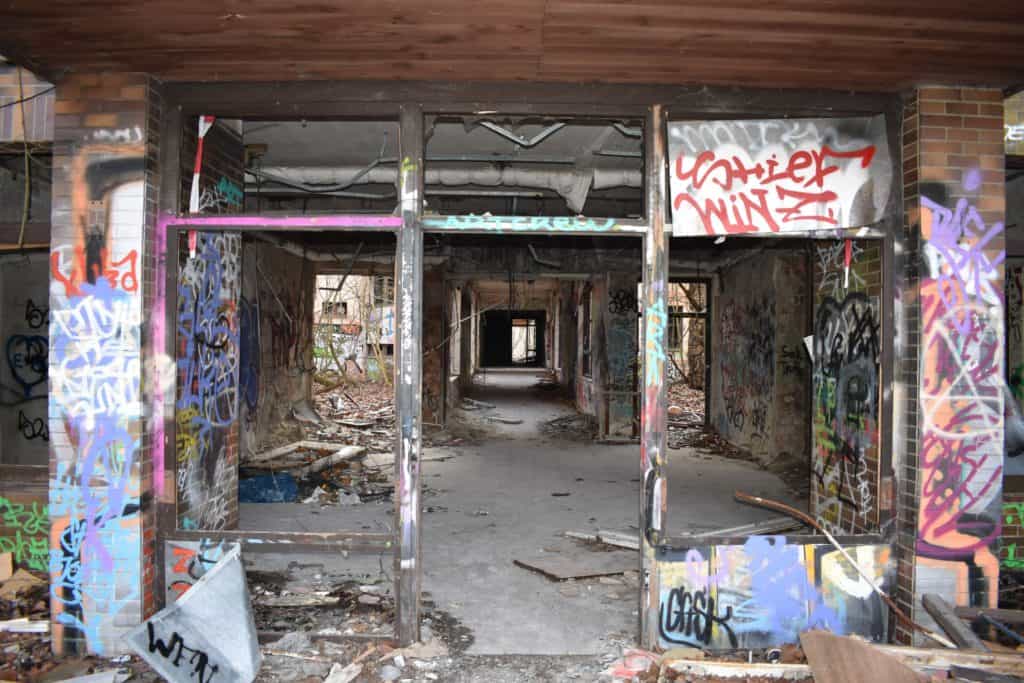
The next terrifying moment was actually taking the first step inside the building. I had no idea if any other people were in there, I didn’t know how well-preserved the floor and walls were (read: I was afraid I would fall through the floor) and I didn’t really know what to expect.
But again, I fought the fear and I went inside. I immediately saw half-wrecked stairs and wallpaper that was peeling off.
I occasionally had to use my phone’s flashlight because – obviously – there were no lights.
After a few minutes, I regained my confidence and started actually exploring the hospital buildings.
At first, what I saw didn’t impress me very much, because the first few rooms I saw didn’t have any spectacular or thought-provoking art (you can find some examples of that below). However, the further I ventured into the abandoned children’s hospital, the more impressive the things I saw were.
Note: I’m definitely not saying that every room you enter will have graffiti masterpieces. In fact, you will mostly see meaningless graffiti tags that don’t seem to contribute anything to the building. I’m definitely not trying to discourage you from visiting this place, but I’m just saying it like it is to avoid disappointment.
But then again, the scarcity of truly beautiful graffiti only makes finding the impressive pieces that much more worthwhile, doesn’t it?
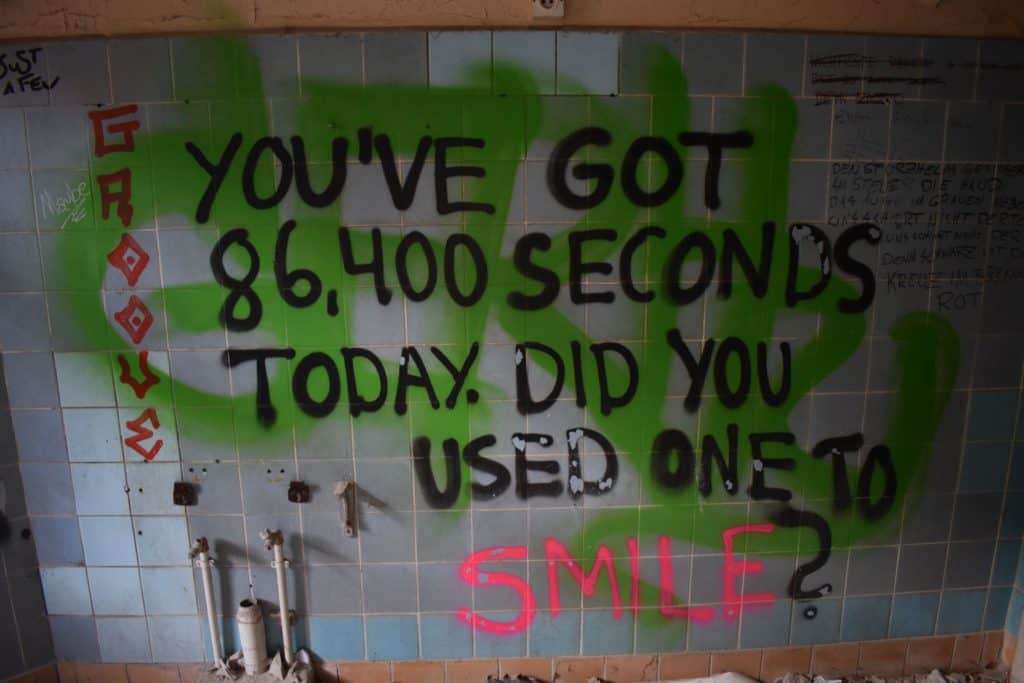
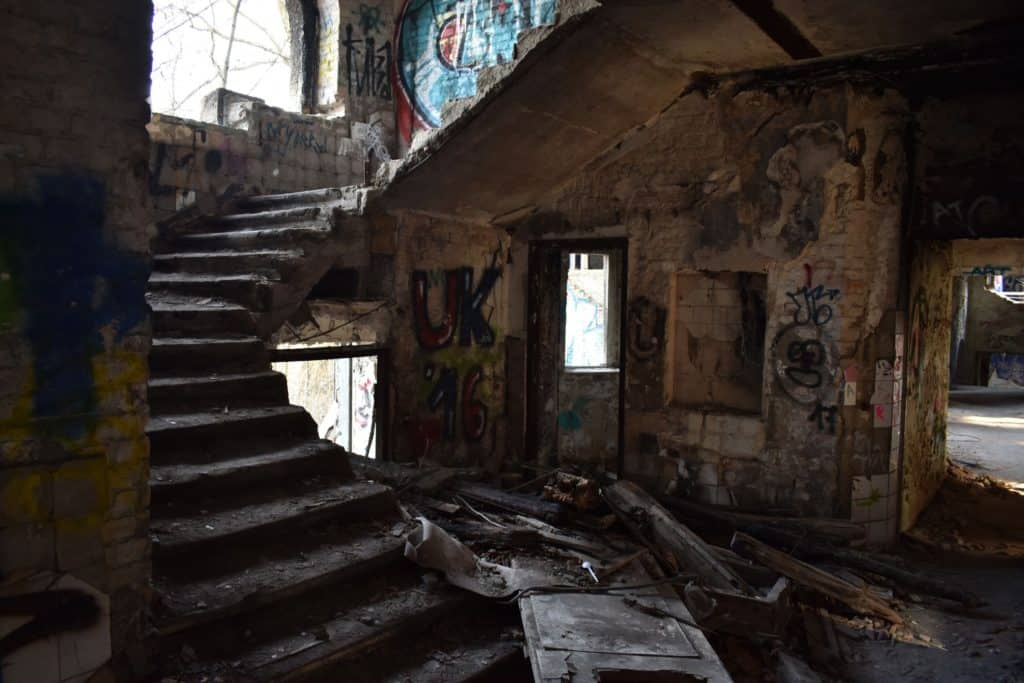

An hour or so later, I went back outside and started walking towards one of the other buildings. Until I saw a man on the other side of the grounds.
Since I didn’t get a good look at him, I had no idea whether this man was another explorer like myself, he worked there, he worked for law enforcement, or something else entirely.
I decided that it was better to be safe than sorry and I got the hell out of there.
Unfortunately, that also means that I wasn’t able to see the rooms I was most excited about, like the cupcake room or the flower room (both of which can be found in Eva’s blog post I previously mentioned).
I found my way back to the fence I had jumped over to enter the premises and jumped (well, crawled) over it again to leave. I then made my way to the bus stop and got back to the city centre without any further issues.
Have you ever done something like this? How did it go?
Thanks for reading!
-S
PIN IT!



In this week’s Free Spirits Friday interview, I’m asking Martin and Misha from Breaking Barriers some questions about their very unique situation. He’s Irish, she’s Lebanese, and they live together in Saudi Arabia. I’ll let Martin explain the rest of their fascinating story.
Let’s just get right into it.
Note: this interview series also includes interviews with Nomadic Matt, Wandering Earl and Never Ending Footsteps, among others. Check out the other interviews here!
My name is Martin. I was born and raised in Ireland and I came to live and work in Saudi Arabia in 2011. My wife’s name is Misha. She is a Lebanese citizen but she grew up in Saudi Arabia. Our story is unusual, in the fact that there are so many differences on the surface between us, yet at the same time we have so many similarities. It was these similarities that brought us together and to where we are today.

We both enjoy traveling a lot. This led us to start our own website, Breaking Barriers, where we document our trips and give information for others thinking of going to those countries. We focus mainly on countries in the Middle East, and other countries which are not on people’s top lists of countries to go to.
When not traveling we are researching how to enhance ourselves so we can get the best out of life, whether learning to scuba dive and skydive, or researching our travel plans for upcoming trips.
For more information about us see this page on our website.
It was initially our joint interest in travel that made us want to travel together and spend more time together. As I had never been to Lebanon and was planning a trip there, it coincided with the time that Misha would be there as part of her yearly trip home. I decided that touring the country with a local would allow me to get the best experience possible out of the country.
Naturally, this worked both ways. After that trip we soon started planning her first trip to Ireland. This time it was me taking on the responsibilities of the tour guide and trying to give her as good an experience as I got in Lebanon.
For Westerners the hardest part about living and working in Saudi Arabia is getting used to the cultural differences. Once you adjust to these differences and accept them, life becomes much easier.
People from an Arabic background find living here easier due to speaking the language. They also have more experience with the culture. However, it is still not their country. In other words: there are things that they have to come to terms with as well.
In the last year, the country has made it a lot easier for women to adjust to life here. The government lifted the driving ban, which allowed them to be more independent. Moreover, they no longer have to rely on taxis to get to the shops or to work.
There is a large expat population, from Philippines’, and sub-continental Asia, to Africa and Europe. This mix of nationalities, race, and cultures, makes the working environment one that takes a little bit of time to get used to.
Living and working in Saudi Arabia as a foreigner isn’t easy, but it’s not impossible.

For us there are a lot of benefits to living in Saudi Arabia. And that’s not just because of the amount of vacation days we get each year. Sure, they allow us to travel often, but there’s another thing that’s very important to us. The location of the region. Saudi Arabia is located close to three other continents. This means that Africa, Asia and Europe are only a short plane ride away.
It’s just great to be able to experience another culture like this. Especially for me. I grew up in Europe and life here is very different to what I grew up with. Living here, you learn about different cultures and how to interact with people from other backgrounds. That makes you a more patient and more positive person.
Then, of course, there is the fact that we have access to travel within the country itself. As it’s currently not accessible for tourism, we can see attractions and places that not many other people get the chance to.
It’s not so tough. For any country we go to, we check visa requirements first. However, the only drawback is that our passports are of two different rankings. This means that while one of us may need a visa, the other one may not. It all depends on which country we travel to so we need to make sure to have it all figured out beforehand.
For example: in the Middle East, the Lebanese passport has free travel to more countries than the Irish passport. While Misha can get in visa free, I might need to apply for a visa. And sometimes that means I have to wait at a long queue in the airport. It works the other way around in Europe. My Irish passport allows me to travel freely, but Misha needs to apply for the Schengen visa. If travelling to Ireland, she needs to get a second visa for this, since Ireland is not under the Schengen agreement.
Currently, due to restrictions between the majority of Middle Eastern countries and Israel, Misha cannot travel to Israel at all. So for the time being, Israel is inaccessible to us. Hopefully this will be resolved some time soon and we can travel there and tour the country together.
When travelling, you want to be as comfortable as possible. However, we often try to step out of our comfort zone. We feel that if you only do things you’re comfortable with, you will miss out on a lot of experiences that you would have enjoyed. We strongly believe that you do need to step out of that comfort zone every so often in order to get the real feeling of a country or culture.

In a word, yes. The Middle East is currently very much overlooked as a travel destination. When people do go there it is mostly to Jordan and Dubai. But there is so much more to discover. For example: Lebanon, Oman, and even Saudi Arabia. Although it is currently inaccessible for tourists, talks are ongoing to change this.
Unfortunately there has always been a negative image of the Middle East, and it has been projected poorly on the global stage. We like to try and present the Middle East from our perspective, as people who actually live here. This is a much more positive view.
Saudi Arabia has been in the news a lot over the past year due to the changes that have taken place here. Think about the reintroduction of cinemas and the decree stating that women can now get driving licences. It is a country that is still a mystery to a lot of people who have not been here. Maybe that’s what makes it so special to live here, knowing that we are some of the lucky few who get to see what the country actually has to offer.
We have never felt in any danger here. Thankfully. Like any country, there are places where you would not go as a foreigner. But this can be said about every country in the world.
The police is very present here, and we have never experienced any problems or anything leading us to think we should leave the country.
In fact, when you go to local markets or trade shops you will find that a lot of the locals are happy to see you and will try to engage with you. They want to find out where you’re from, how long you’ve been here, and how you find living in Saudi Arabia.
With news reports we see from some European countries at the moment we feel safer in Saudi Arabia than we would back in Europe. Of course, this also comes down to respecting the country and its people. Like any country we go to, we try to respect the local people, their country and their culture. If given the chance, we try to interact with them and experience things their way to know the true feeling of the country.

There is a lot of research to be done when coming here first, as there are a lot of cultural differences to get used to. From timing your shopping trips properly due to shops closing at prayer time, to learning how to stay extremely aware of your surroundings when driving.
Living in Saudi Arabia can offer you a great opportunity to develop yourself. By this, we mean you can develop yourself personally, by learning the language and interacting with the locals, and taking every opportunity to witness and experience the generosity of the Arab world. If you get taken to a restaurant by a local you will certainly not leave feeling empty! In fact you will be lucky if you can find space on the table to put anything down!
If we had to pick one thing that future expats should know, it’s to learn to accept the culture and the traditions of the country. You are the guest here and it’s only right to respect the country you are in. You will need to adapt and be accepting of everything that happens here.
We also created a guide for people who are planning on going to Saudi Arabia!
In a nutshell, yes. Most of the dealings you will have will be with people from the Philippines, India, or Pakistan, and of course a lot of Arabs. However most of the Arabs will be from Lebanon, Egypt, or other northern Arabic countries. The majority of these people will speak English.
You might find yourself dealing with someone who does not know a lot of English. In that case, you will find yourself using a lot of hand signals. In the Arabic world hand signals are used a lot as a form of expression so you will see this a lot anyways.
Of course it’s good to learn some Arabic, especially the greetings and some basic phrases. Not only will it show that you have made the effort to try and immerse yourself more but it will also come in useful if you are at a local market or somewhere that not a lot of foreigners go.
The Middle East is often portrayed as a dangerous place to be. People often discourage travelling to the Middle East. It’s often displayed as a region where you cannot enjoy yourself or where there are no rights for foreigners. These are not true. There are lots of things to do in the Middle East, from exploring well preserved ruins to sampling the culture of an extremely old civilisation. See our guide to Lebanon as an example.
A lot of people also have the wrong idea about the region. They believe that it is extremely restrictive, that women need to be fully covered, that you will get put in prison for the smallest things, and that capital punishment is a daily occurrence. All of these couldn’t be further from the truth.
Yes, you will see women that are covered up, but this is not a requirement. It is more a cultural upbringing. You will also see a lot of women walking around wearing t-shirts and jeans. Except in Saudi Arabia where the wearing of a long dress – called an abaya – is a requirement. But a lot of women here will not have their faces and hair covered.
Capital punishment is only carried out for extreme crimes, like murder. Not unlike the USA, but for some reason people seem to make a big deal of the fact it happens in some Middle Eastern countries but don’t bat an eyelid that it happens in the USA.
The Middle East is an area that is unique to travel to. You need to be respectful and conscious of its culture and traditions. But by being like this, you will find that it has a lot to offer as a travel destination. In our opinion, everyone should try to visit some of the countries here at least once. Go beyond the usual haunts like Dubai, and enter the less travelled areas such as Lebanon, Oman and Bahrain. You will realize that there is much to offer here, and your experiences will allow you to see the true beauty of the Middle East.
Thank you so much to Martin and Misha for taking the time to answer these questions. If you’re interested in their stories, you can follow them on their blog Breaking Barriers, on Facebook, on YouTube, on Pinterest, on Twitter and on Instagram.
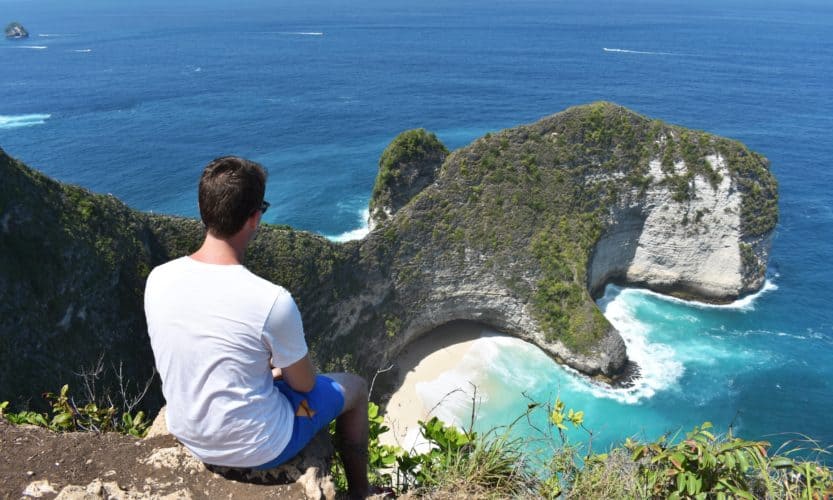
Bali has been in many travel guide books for years now. Maybe too many. The Indonesian island has been receiving travellers from all over the world, taking in the breakfast bowl / salty hair / hipster aesthetic and wanderlusting their way through life. I joined their ranks this summer, and I was in awe at this Indonesian island. That’s why I’ve come up with a few reasons why you should visit Bali – and a few reasons why you shouldn’t.
When I was planning the blog posts that I would write about my travels this summer (I also went to Japan, by the way!), I just couldn’t seem to come up with a good blog post idea for Bali. Since it’s been so popular among travellers lately, it seemed like everything that could have been written about this island has actually been written and I had nothing more to add.
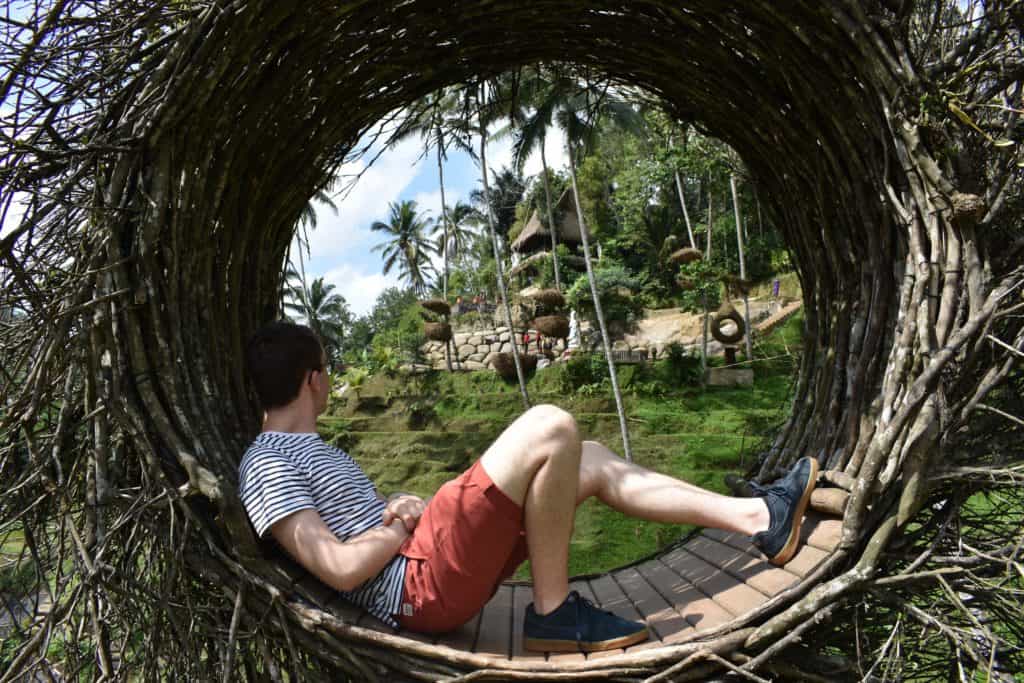
But after a while, I noticed that there weren’t many posts that highlighted both the positive and negative aspects of Bali. Most posts either focused on why Bali is worth a visit or why Bali is not worth a visit.
In this article, I’m taking the middle road and leaving the final decision up to you. These are the main reasons why I believe Bali should and shouldn’t be on your bucket list.
Before you continue reading: watch this Bali travel video I made to get you in the mood for this article. You won’t regret it.
Here’s an overview of everything I talk about in this post, in case you want to skip ahead and read one specific part (just click one of the links below!)
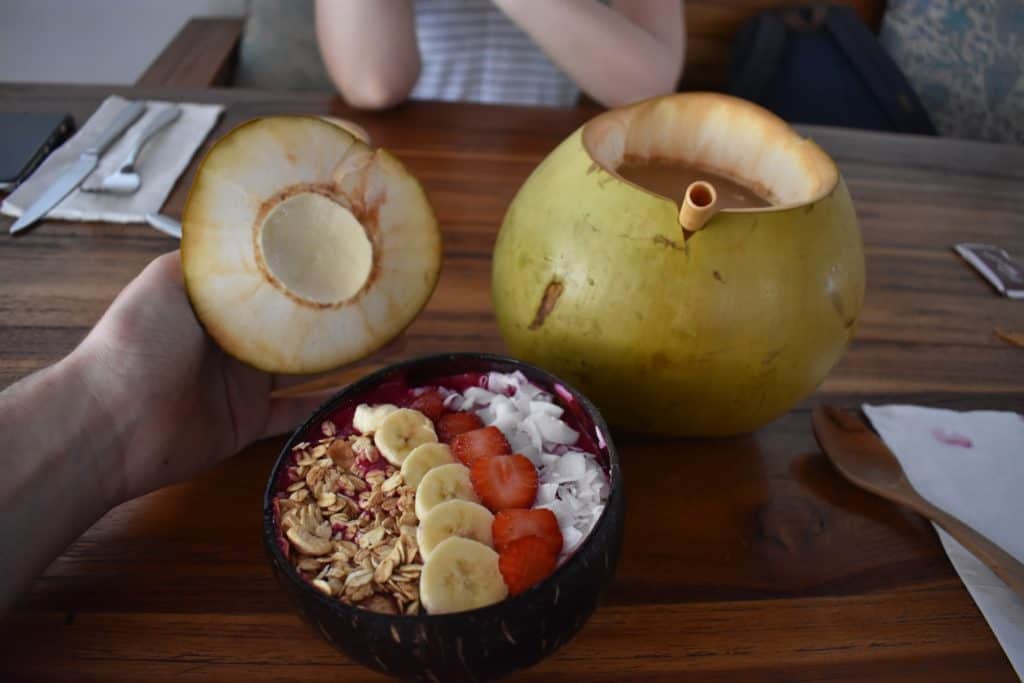
The food scene in Indonesia is unreal. Nasi goreng, beef rendang, chicken satay, not to mention the trendy breakfast bowls that are served daily in hipster cities like Canggu.
There are so many restaurants in Bali worth a visit that you’ll probably barely scratch the tip of the culinary iceberg that is Indonesia.
Also, if you’re used to paying $20+ for a meal, Bali restaurants are heaven on earth. So. Ridiculously. Cheap.
Also #2: breakfast bowls. That’s it.
One of the best things to do in Canggu (or any other city on the island, probably) is to get a massage.
Throughout our five full days on the island, we got three massages. Just throwing this out there to give you an idea.
If you truly want to relax and let go of any kind of stress or tension you have bottled up inside, a massage parlour on Bali is the perfect place for that.
There is nothing better to help you relax after a long, strenuous day of hiking around Bali than getting a foot massage. There’s something soothing about having a stranger rub your feet with essential oils and feeling the pressure leave your body.
Bali massage prices are definitely way cheaper than comparable services in Europe and Northern America. For a 1-hour full body massage, you’ll be set back between 60,000 and 100,000 IDR (about 4-7 USD). For a 30-minute foot massage (which I also highly recommend), you’ll pay about 50,000 IDR (about 3.50 USD).
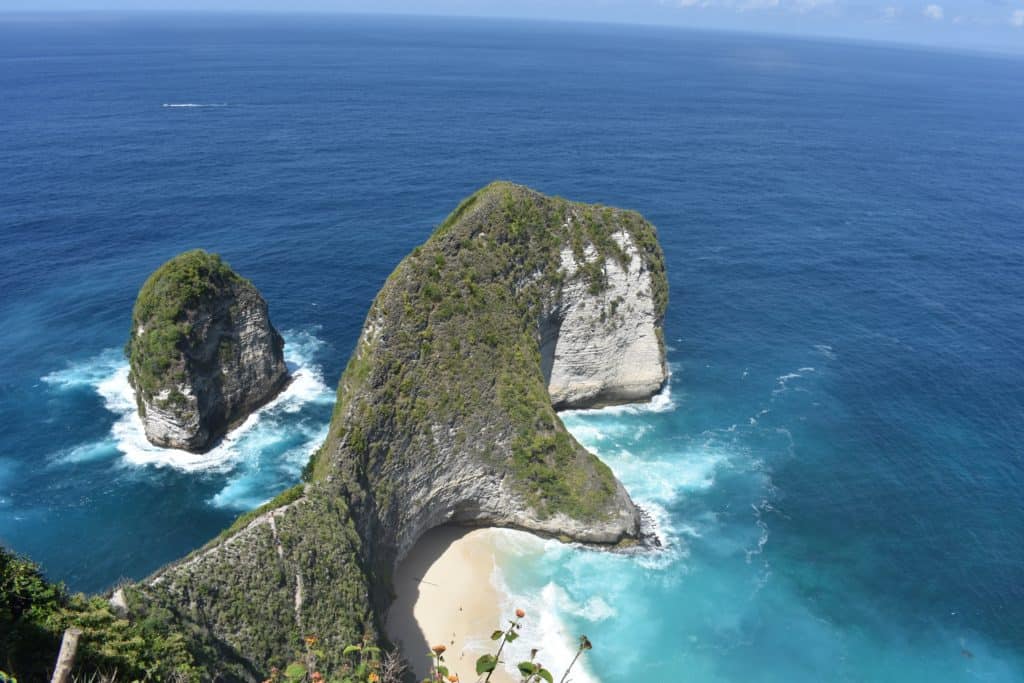
Still wondering what to do in Bali?
If you’ve got a day left to spare, why not consider leaving the island and taking a day trip to Nusa Penida?
Nusa Penida is an island that is located southeast of Bali and can be easily reached by boat, crossing the Badung Strait. You’ll have to get to Sanur Harbor in Denpasar (ask your taxi driver to help you get there) and then spend about 30 minutes on a speed boat before arriving at your destination.
A Nusa Penida day trip will show you everything that’s worth a visit on the island, and it will also include some – how do I say this – interesting roads. (Read: wobbly and headache-inducing)
Notable sights in Nusa Penida include Kelingking Beach (you’ll know this one from all the Instagram photos), Broken Beach, Angel’s Billabong and Crystal Bay. All of these can be combined easily on a fairly cheap organised day trip, including your own personal driver to take you all around the island.

Bali rice fields are great.
I might just be saying this because I haven’t seen rice paddies anywhere else, but still. I recommend the Tegallang Rice Terraces (about 20 minutes north of Ubud), because you’re able to really walk between the fields and see some locals.
Of course, locals know that these rice paddies are popular among tourists and they try their best to make some money out of it. However, I can still say that Tegallang was the most beautiful rice fields I have seen. So far.
Tip: if you want to take a picture of a local farmer in traditional clothes, you might want to reconsider. As I said before, locals know that their rice fields are popular, and they exploit this knowledge. If you do take a picture of one of them, they’ll expect you to pay up and they won’t leave you until you do.
You might not agree with me if you’ve been to Bali yourself. And I completely get that. After all, local taxi drivers and market/street vendors will always try to find a way to get you to spend some of your hard-earned money on their products. And they probably won’t be very nice and approachable about it.
However, I still strongly believe that the Balinese people are some of the friendliest and most helpful people out there.

One of the most popular things to do in Ubud is without a doubt the monkey sanctuary. In this forest-like terrain, monkeys roam around freely (and sometimes they even try to steal stuff from oblivious travellers’ backpacks).
A visit to Ubud monkey forest is a welcome respite from days of going through traffic in the back of a cab, wondering whether or not today is the day you die in a car crash.
The monkeys have a better training than many people give them credit for. They won’t jump on you, become aggressive or steal from you unless they are provoked. And even if something does happen, the park is guarded by many attentive rangers who have years of experience attending to these monkeys.
Besides, at an entrance fee of only 50,000 IDR (3.50 USD), it’s a steal.
If you’re looking for an authentic view of what Indonesian people are actually like, Bali isn’t the place to be.
As I mentioned before, the Balinese know that their island is immensely popular among Australian, American and European tourists. And they take no shame in using this knowledge to get them some extra pocket money (see also the ‘local farmer’ who posed for pictures with travellers at the rice fields).
If you’re looking for things to do on Bali that haven’t been done a million times by thousands of people yet, you’re going to be looking for quite a while.
I’m not saying that visiting Bali off-the-beaten-path is an unattainable dream that you shouldn’t pursue if you really feel like it.
Everyone who went to Bali has gotten a massage and sat by the beach at Kuta or Canggu. But that doesn’t mean that you shouldn’t do it.
Now, this is one of my personal main reasons why Bali is not worth a visit.
Although the people of Bali are generally very kind and accommodating to travellers, Bali is probably not a place where you’ll feel safe and secure as a foreign traveller.
For starters, traffic is crazy. I’m not exaggerating. Cars pass each other left and right on the highway, lanes don’t seem to have any significance and turn signals are not a thing, apparently. And I haven’t even talked about the scooters yet. (More on that later)
This goes without saying, but don’t try to smuggle drugs into Bali. You’ll be faced with massive cash fines and long jail sentences.
Be wary of taxi drivers and street vendors who try to get your attention in order to sell things to you. Once you give them some kind of attention (even just making eye contact or saying ‘No, thank you’ will encourage them), they’ll be difficult to get rid of. Just completely ignore them and move on.
I think you get the gist. I didn’t feel safe in Bali, and chances are that you won’t either.
I promised you more explanation about the problem of heavy traffic in Bali, right? Here it is.
Don’t go to Bali if you’re looking for a week of fun cruising through the island on a rental scooter, unless you’re a highly experienced scooter driver.
On our short stay in Bali, and especially on Nusa Penida, we saw several western-looking travel couples on scooters with bloody and bruised limbs. Admittedly, these might be from other accidents that had nothing to do with Bali, but there were too many for it to be a coincidence.
It’s no fun driving a scooter through rice paddies if you’re injured. Be very careful if you do decide to rent a scooter. Or, better yet, save yourself the trouble and don’t rent a scooter at all. There are plenty of other things to do in Bali.
You know which pictures I’m talking about. The ones on Instagram that show a pretty, tanned blonde girl in an infinity pool, turning her back to the camera, sipping on a coconut cocktail and overlooking the lush rice terraces of Bali.
The truth is, this isn’t what Bali actually looks like. Social media is giving us a false image of travel, and while social media-fueled tourism might be a good thing for local economies, it could lead to disappointment on the part of travellers convinced by this exact idealised image.
Yes, there are beautiful sights to be seen and wonderful things to do in Bali. But the road to these sights is paved with ugly concrete and garbage on the sidewalk.
I went to the beach in Bali twice. And I wasn’t impressed.
Tip: if you’re going to Canggu and you’re not planning on taking surfing classes, don’t go to Batu Bolong Beach. It’s not worth it.
You see, back in Belgium, I grew up in a coast city. Which means that it essentially takes a lot for a beach to impress me. The only beach that I saw during my week in Bali that came close to impressing me wasn’t even in Bali.
Kelingking Beach (Nusa Penida) looked great from up above. The beach down below doesn’t have a lot of people, because it takes a hell of a pathway to get down to the bottom. We didn’t get down, but at least it looked nice from a distance.
Undoubtedly, there are plenty of wonderful beaches in Bali, hidden away from the public. However, we were only in Bali for about six days, so we didn’t really get a chance to discover these.
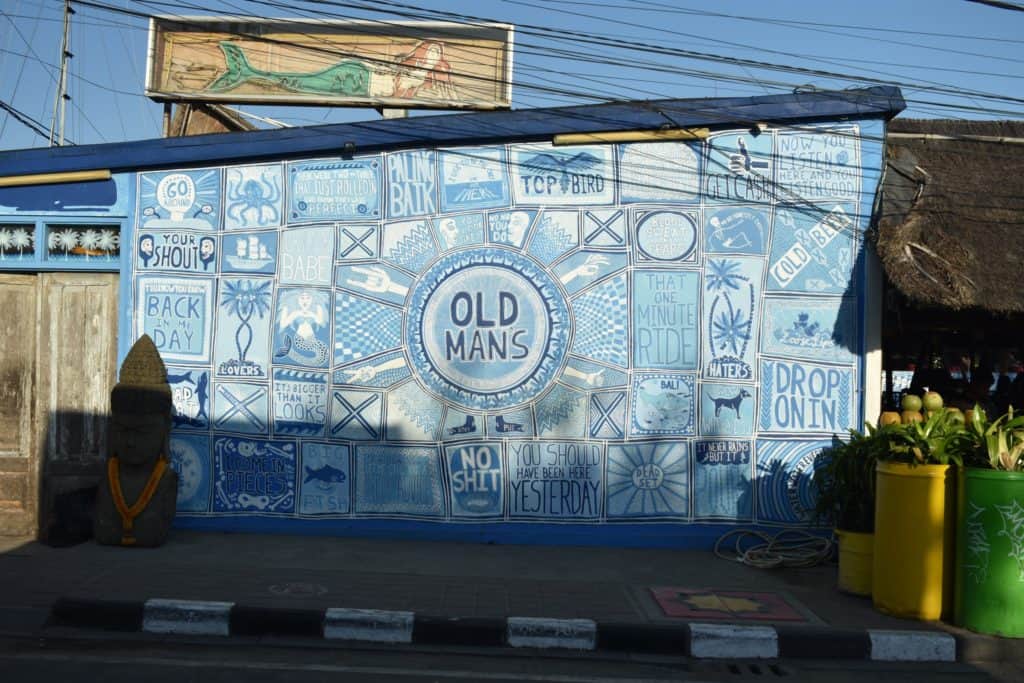
If you really want to know what I think about it: yes. Bali is overrated. But you shouldn’t abstain from visiting Bali just because I say it’s overrated. I also think there are many things worth seeing and discovering in Bali, and in the end, it’s really your own personal decision.
This whole post boils down to this one question, and the truth is that it’s up to you to decide. You have to ask yourself “Is Bali worth a visit?” and come up with an answer before you make the decision to travel there.
My only hope is that this post might shed some light on the actual condition of the Indonesian island, so that you can make an informed decision for yourself.
Would you still want to visit Bali after reading this post? Why (not)? Let me know in a comment!
Thanks for reading!
-S
PIN IT!




Our next guest for Free Spirits Friday is none other than Derek from Wandering Earl. Wait, what? Shouldn’t it be Wandering Derek then? Well, according to the man himself, Wandering Derek just didn’t have a nice ring to it. So he went with his middle name for his travel blog.
The man behind Wandering Earl has visited over 100 countries, he’s been kidnapped, he’s acted in a Bollywood movie, he’s worked on cruise ships and he’s taught English in Thailand. Most impressive of all: ever since Christmas Day 1999, Earl has been travelling non-stop. That’s right.
I think it’s safe to say that this guy has a lot of expertise on living a travel lifestyle and working as a digital nomad. This is the story of Wandering Earl.
Back in 1999, after graduating from university, I decided to take a 3 month trip to Southeast Asia before starting my career as a sports agent. I took off on Christmas Day and flew to Bangkok. I then celebrated the Millennium in Cambodia. And that night, I decided that 3 months wasn’t going to be enough at all. I had to find a way to travel for a much longer period of time. Of course, I imagined that a ‘longer period of time’ might mean 1 or maybe 2 years if I was lucky. After all, I only had $1500 to my name at the time. However, here we are and that trip has still yet to end. Since 1999, I’ve been on the road non-stop, traveling to over 105 countries. I’ve been figuring it all out as I went along. Since 2009 I’ve been blogging and in 2012 I started my own tour company, Wandering Earl Tours. I manage both of these from my laptop wherever I happen to be traveling. So, travel has honestly become my life now that it’s been almost 20 years, so much more than what I had originally envisioned!

Two things made it impossible to go back – people and education. The simple fact that I was meeting so many new people that I otherwise would never have come across in my life, hearing their stories, learning from their experiences and creating incredibly strong bonds was probably enough to keep me going. But when I thought about the overall education I was receiving from every place I visited, every meal I ate, every village I passed through and every interaction I had, I absolutely could not imagine life without these two things. And that was it. Right there at Angkor Wat, I was celebrating the Millennium and pondering what I had already been through in such a short period of time. And I realized that I had to keep traveling as long as I could. I didn’t have a plan, I didn’t know anyone who was out there traveling the world. I didn’t know where this would all lead. But I didn’t care. I felt it deep inside that this was a decision I needed to make.
This was a little tricky at first as my money was dwindling quickly. I only had $1500 when I set out. And now that I planned to travel indefinitely, I obviously needed some source of income. It all came down to talking to as many people as I could, both locals and other travelers alike. I was trying to figure out some ideas that could earn me some money. Back then I couldn’t just go online and find endless ideas. It didn’t exist. So, at one point, I met another traveler who told me to go to Chiang Mai, Thailand and teach English. Eventually, that’s what I did. I posted hand-written signs around the Chiang Mai University campus, along with a friend of mine who joined me. The signs said ‘Native English Speakers willing to teach English’. We received about 100 calls within the first week. Before we knew it, we had daily classes lined up where we would sit in the park or in a cafe with a handful of students and teach them English. From there, I met another traveler who mentioned working on board cruise ships. About 1.5 years later, when the money was low again, I took his advice. I ended up getting a job as a Tour Manager on board a cruise ship. This allowed me to save some money, continue traveling and eventually, give me the opportunity to start working online.
Probably Syria. I visited Syria about a year before the current fighting broke out. It turned out to be one of the most rewarding travel experiences of my life. I had no idea what to expect at the time but I certainly didn’t expect such beautiful cities (especially Damascus and Aleppo), such stunning sites (Palmyra, Krak des Chevalier Crusader Castle, Maaloula Monastery), vibrant markets and wonderful food. To top it off, I have never been invited into more homes, to more local events or to more local celebrations than in Syria. Everyone was incredibly welcoming, the entire country felt so safe and nobody tried to rip me off or cause problems. Everywhere I went, I made local friends in a matter of minutes. My original plan was to stay for 2 weeks but I ended up spending 6 weeks inside the country in the end!

Nope. For me, the main reason I travel is for the interaction with all kinds of people. If I was just looking to check off countries from a list or see the main sights, I would have stopped traveling a long time ago. So, with a focus on interaction, the actual destinations don’t matter as much. Sure, I’d like to see as much of the world as I can. But still, seeing every country on the planet is not a goal.
These days I no longer stay in such dorm rooms. But yes, I feel it’s definitely worth it. It’s something that I feel all travelers should experience at some point. Forget about the health and quality of sleep aspects. It’s not going to have much of a long-term effect if you stay in $1 dorm rooms for a year. However, spending so little, sharing a room with strangers, learning to live very simply and not being comfortable all the time – those all provide lessons that will definitely have a long-term (and positive) effect on one’s life. My days of staying in such dorm rooms absolutely helped shape who I am. They taught me a great deal about interacting with people and surviving with much less than I ever thought I could survive with. Of course, you don’t need to sleep in such places for years on end. However, going beyond your comfort zone and trying it out for a while will definitely lead to great, long-lasting benefits.

First, yes. I do get somewhat burnt out from time to time. But I don’t have any kind of longing feeling to go back to the USA to live a more settled life. Also, since I really don’t have a home to go back to, that’s a bit difficult. My family and old friends are all scattered around the US, my girlfriend is from Romania and some of her family lives in Sweden and we have friends all over the world. So it’s difficult to pick a place to call home. However, when we do get burnt out, which definitely happens with all the moving around, we simply pick a place that we know or think we’ll enjoy and we stay put for a while. Maybe it’s a month like our recent stint in Lisbon. Maybe it’s 2 or 3 months if that’s what we need. It’s definitely important for us to rest and just be in one place whenever travel starts to overwhelm us or maybe we need to concentrate on work more than usual. Our set up allows us to do that. And once we’re ready to get back on the road, off we go. For us, this works perfectly.
In 2012, readers of my blog, Wandering Earl, started asking if they could travel with me. I would get emails such as “Hey Earl, I know you travel to India a lot and I’d love to join you the next time you go!”. So, it got me thinking. If so many people are interested in traveling with me, maybe I could organize a group trip so that everyone can join at once. That’s how it all started. I put together an India itinerary and announced it on my blog and social media. The trip sold out in less than 24 hours. A few months later I added a Mexico trip and then another India adventure and they sold out as well. Before I knew it, I was offering more and more trips every year, to more and more countries around the world.

When I started, all of the destinations were based on countries that I had been to many times and that I knew extremely well. This included India, Mexico, Romania, Thailand, Cambodia and Turkey. And for the most part, that’s still how I choose the countries for the tours today. However, I also listen to requests from my readers as they are often suggesting certain countries where they would love for me to organize a tour. If it happens to be a country I’m not too familiar with, I simply start getting familiar with it. In the end, whether it’s to a country I’ve been to 30 times or 2 times, it’s the laid-back, small group style of these trips that really appeals to those who join.
It’s all about freedom. The freedom to wake up each day and decide where I want to go or what I want to do or how I want to live. I personally love travel so this freedom enables me to be nomadic and travel as I wish, to interact with all kinds of people, to never stop learning, to partake in activities that otherwise would only remain a dream. This kind of control over our lives simply isn’t possible with a more ‘normal’ set up. Once you have a taste of such freedom, it’s very difficult to give up of course.
Thank you so much to Derek for taking the time to answer these questions and to give you all some insight into the world of a digital nomad. You can follow him on his blog Wandering Earl, on Facebook, on Instagram and on Twitter. You can also check out his tour company on Wandering Earl Tours.
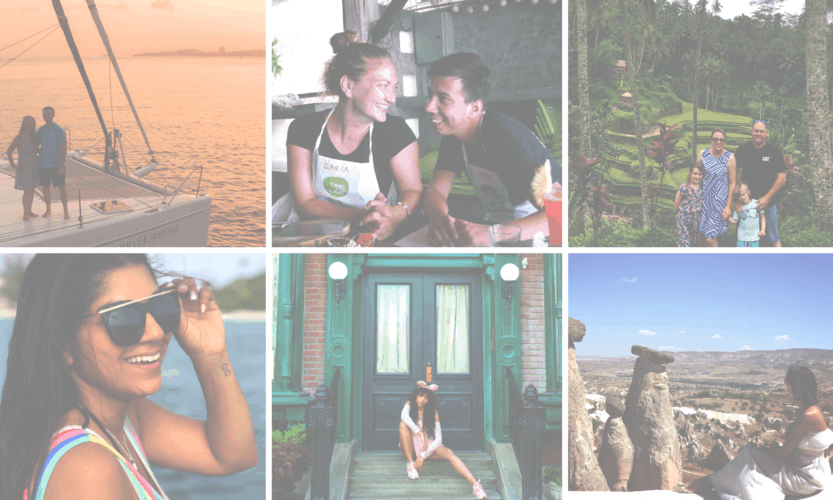
I’m a firm believer in supporting your friends, and, by extension, supporting your fellow bloggers. That’s why I decided to compile a list of some of my favourite unique travel bloggers.
After asking around for a little while, I came up with this list of travel bloggers who write about a specific kind of travel or one specific aspect of travelling around the world. I asked all of them to share what they write about on their blogs and why they chose to write about that particular thing.
Note: this list of unique travel bloggers is in no particular order.
So, here it is. If you were still looking for some unique travel blogs to follow in 2019, look no further. Because these are …
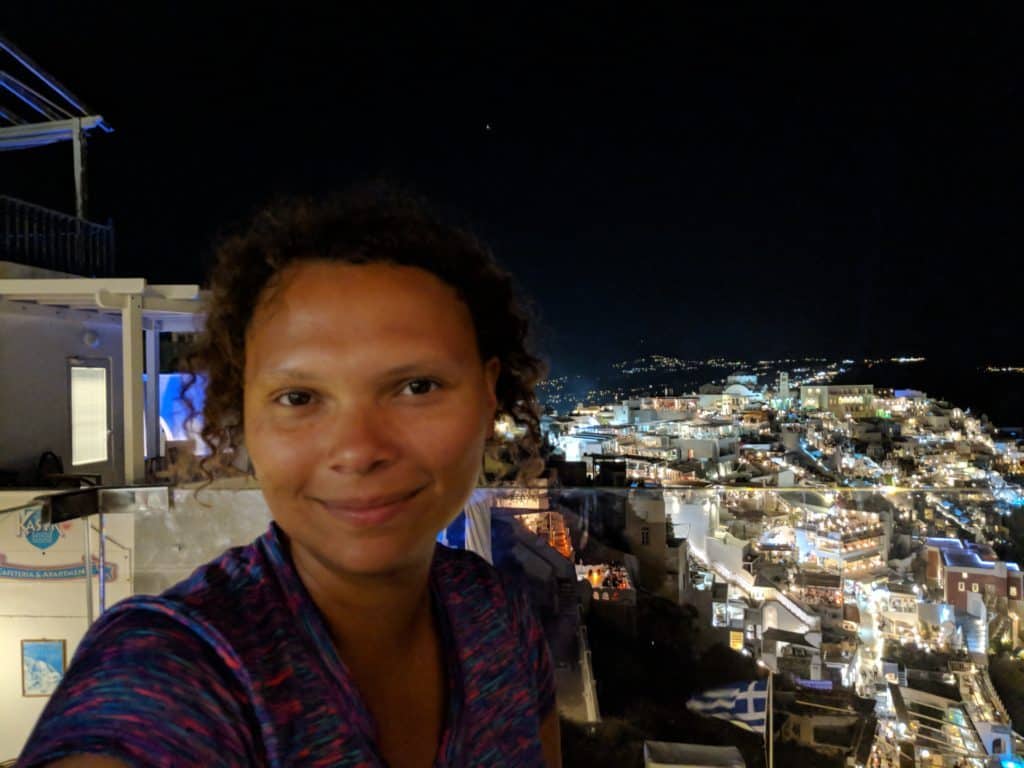
“On my blog, I talk about travel, but also about how I am able to travel long term and work remotely. I started as a freelance writer making $2.50 an article and now make over $100/hour (still mainly with writing). I also travel outside of the US for at least a third of the year; this year I’ll be abroad for the entire year!
On my blog I share different ways to make money remotely and tips for thriving in the digital nomad lifestyle. My goal is to show how possible it is to have a solid income and still travel all the time! It’s a lifestyle that it seems many people would be drawn to, if only they knew how to succeed at it.”
– Renee from Renee the Wanderess

“Rolling Along With Kids is all about sharing tips on travelling to Bali with kids. Our family regularly travels to Bali and we share our experiences both good and bad. We explore topics on the best places to stay and how to go about choosing the best accommodation for readers’ families. There is a huge range of resorts and villas in Bali, choosing is simply overwhelming at times!
We also share tips on the best things to do with kids, how to hire a driver with car seats, using a nanny to help out with kids and lots more! We aim to inspire families to travel with their kids and to often venture from their home country for the first time. Discovering the beautiful culture of Bali with their kids is a wonderful way to make memories.”
– Kate from Rolling Along With Kids
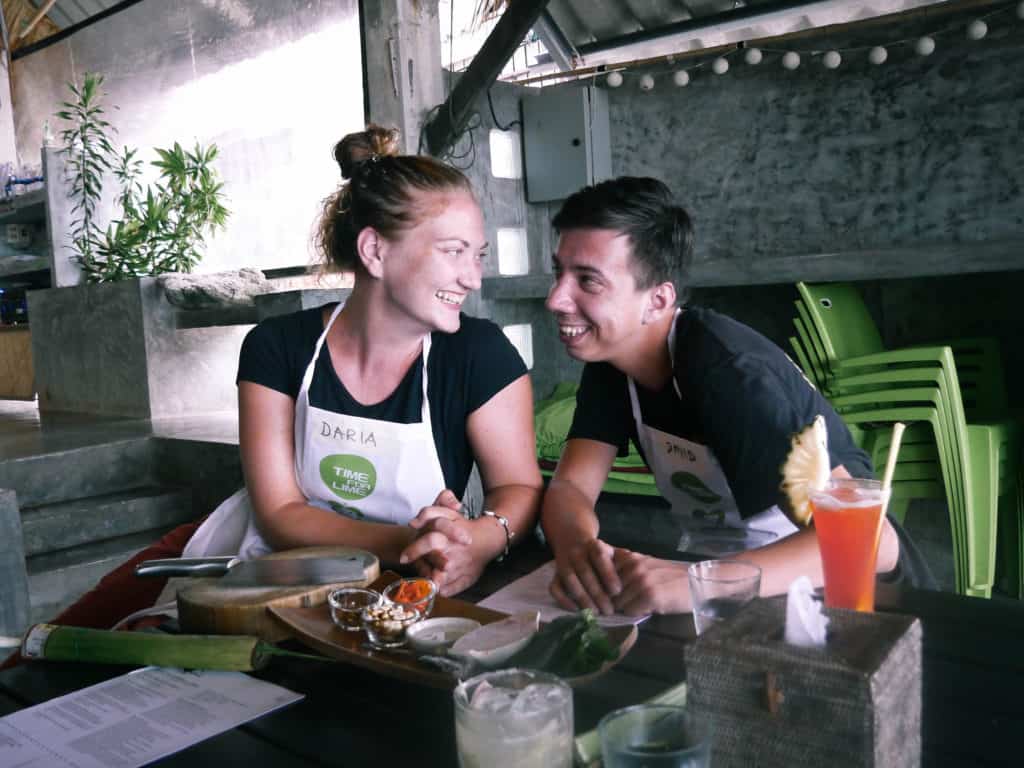
“Travel is awesome and, without a doubt, one of the greatest things you can do with your time and money. Living on plain noodles and water after your vacation because you’ve spent too much money is less fun.
The couple behind DeeGees Life go into great depth talking about how to manage your budget while traveling. You can find useful tips on how to set up your budget goals, how to track your expenses and what sort of changes to consider if you need to reduce your spending. Besides the easy to read cost tables with every travel story they share, the guys also publish detailed country budget reports. So far Southeast Asia only, but stay tuned for more!”
– Darja from DeeGees Life

“I launched ManTripping after doing SEO and Marketing consulting for a few “women’s travel” blogs about a decade ago. At the time, there was nothing dedicated to promoting men’s travel in a positive way. There’s more to a guys’ trip than “The Hangover”. As the blog grew, I was able to leave my corporate job running influencer programs for large retailers and have been doing ManTripping full time for the past five years. We even organised “Blogger Mancations” through #MenWhoBlog which are fam trips where the itinerary is specifically designed to suit men’s interests.
Some of my unique blogger adventures in 2018 included: judging a “Rocky Mountain Oyster Festival” in Nevada, off-road racing across Baja California, taco tours in Puerto Vallarta, cruising in Alaska and Hawaii, attending performance driving schools, and behind the scenes exploring on the WWII Battleship IOWA in Los Angeles.”
– James from ManTripping
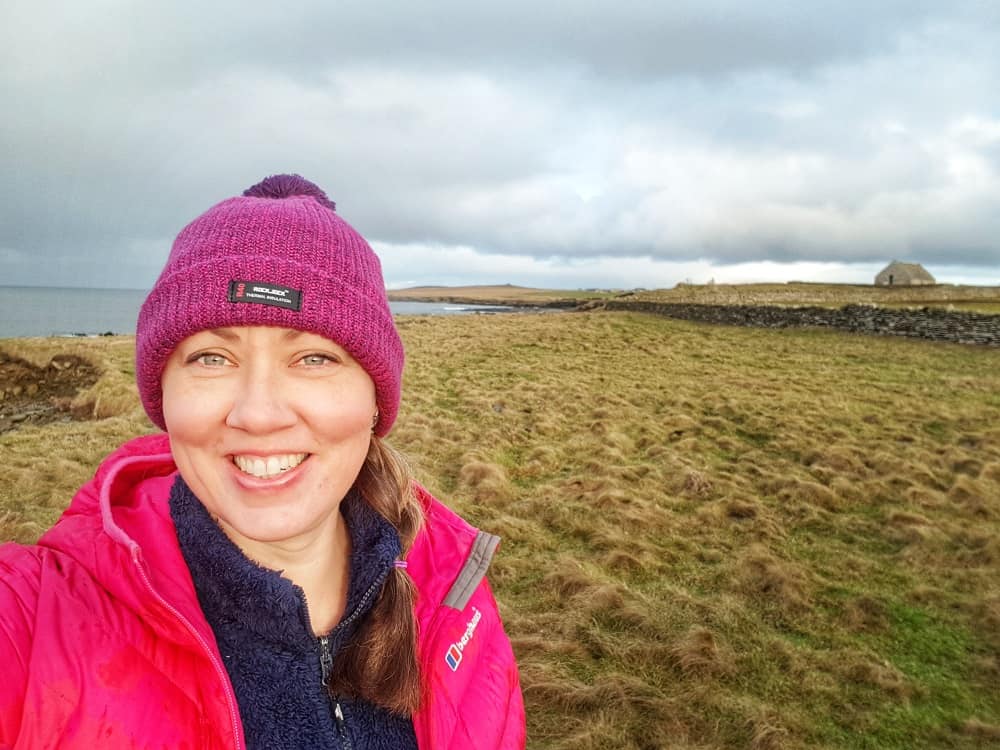
“Scotland is a popular travel destination. That means there are lots of blog posts written about places to visit in the country. As a local, I found it frustrating that most of these articles only featured the well known attractions. I decided to start my own travel blog, not only dedicated solely to Scotland, but also offering a unique local perspective.
I try to avoid the popular tourist places and write about the hidden gems instead. My website offers ideas for tourists looking to get off the beaten track or inspiration for visitors who have been to Scotland before and want to see somewhere different on their next trip.
I have travelled around most of the country and only write about places I have personally visited so I can offer first hand advice.”
– Susanne from Adventures Around Scotland
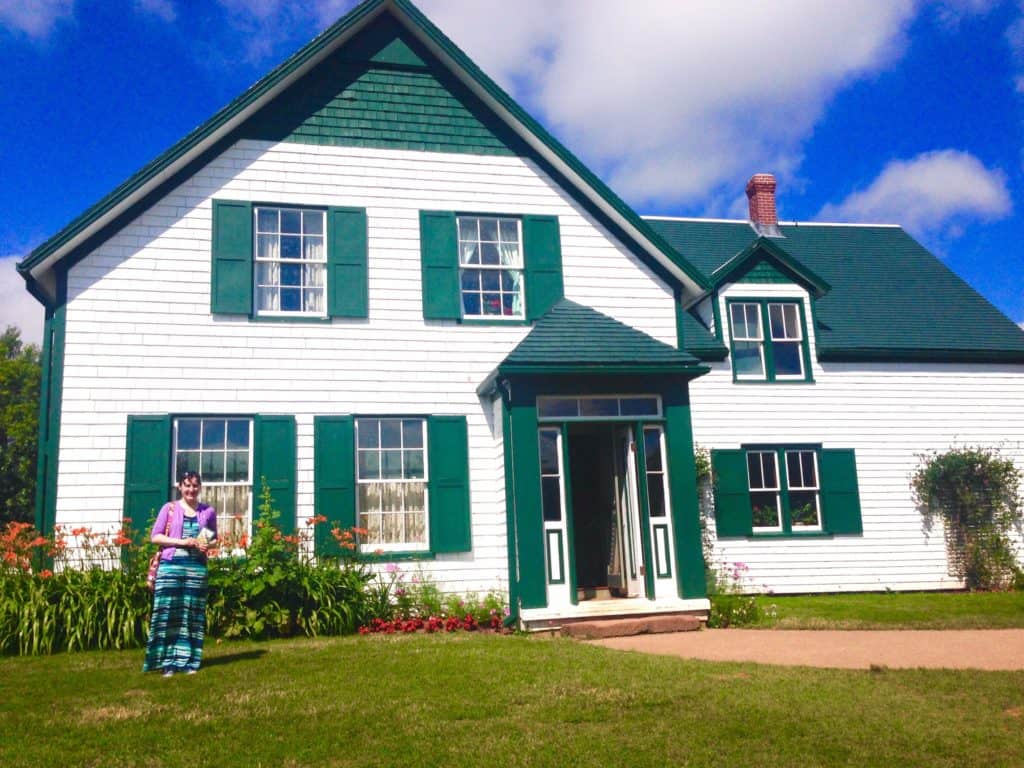
“Did you know that Enid Blyton’s Famous Five Kirrin Castle is based on a real-life castle ruin, but it’s not actually on an island? Or that the real-life Green Gables is actually the house of the author’s cousins? As a librarian, and life-long bookworm, I love making real-world connections to and learning the history behind my favorite novels.
My travels often center around literary inspired destinations, which include historic author houses, places that inspired book settings, and places and statues created later that were inspired by books. I hope by sharing my travel experiences, book reviews, and other literary related thoughts through my niche blog I’ll inspire readers to look at books as more than just printed pages. I also hope to create a space for like-minded bookworms to find and discuss ideas that will help them share their love of books with friends and family.”
– Elizabeth from A Suitcase Full of Books
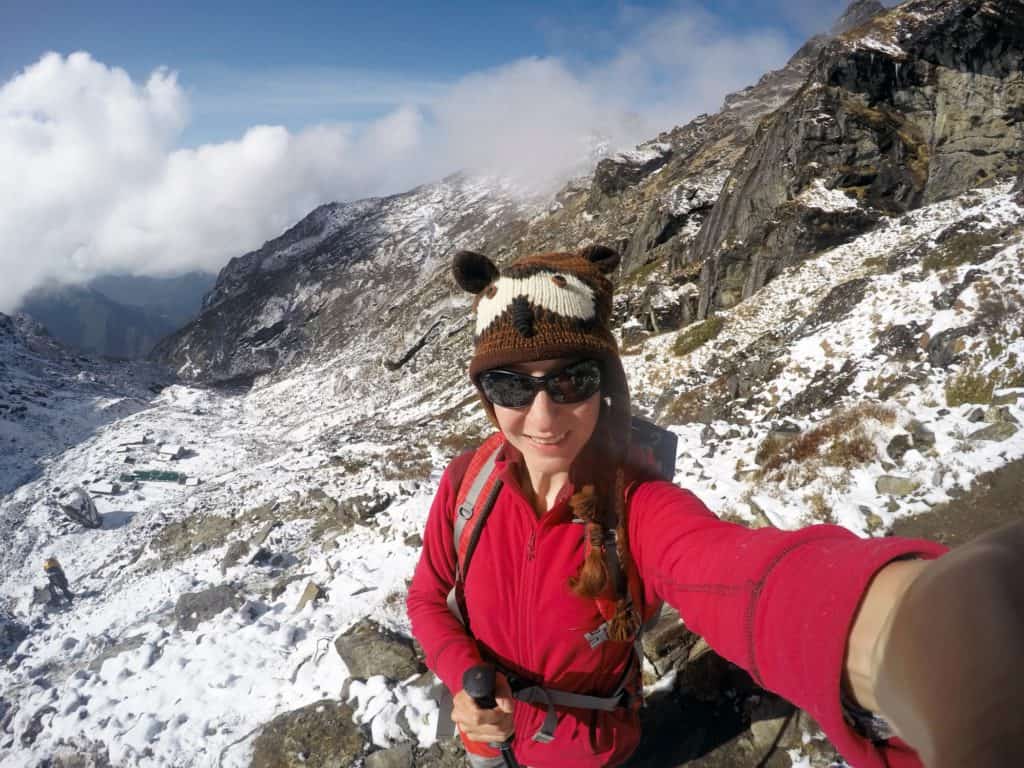
“I stumbled upon Nepal while backpacking through Asia as a travel blogger. I planned to spend two months there, but when it was time to go, I felt like the time had come too soon. I’m extremely lucky because I was introduced to a group of locals as soon as I arrived. They showed me secret spots and told me about the culture in a way I hadn’t read about online. I learned that there were over 125 different cultures and languages in the country. It was impossible to get bored. Each person I met was so unique.
On top of all of that, locals welcomed me into their homes like I was family. It was something I’d never experienced before, and when it came time to choose my next country to visit, Nepal reappeared on the top of my list. When it was time to choose somewhere to go after Nepal, I couldn’t think of a place I’d rather be.
One day, it sort of hit me that my blog was about Nepal. I never really had to choose a niche. I like to joke that it chose me. It was a place I was so passionate about, and I wanted other foreigners to have the same local experience I was having. There’s so much more than the tourist areas everyone flocks to, but there’s very little information online. That’s where I come in. I want to show people how to get off-the-beaten-path and how to experience pure Nepal.”
– Michelle from Full Time Explorer
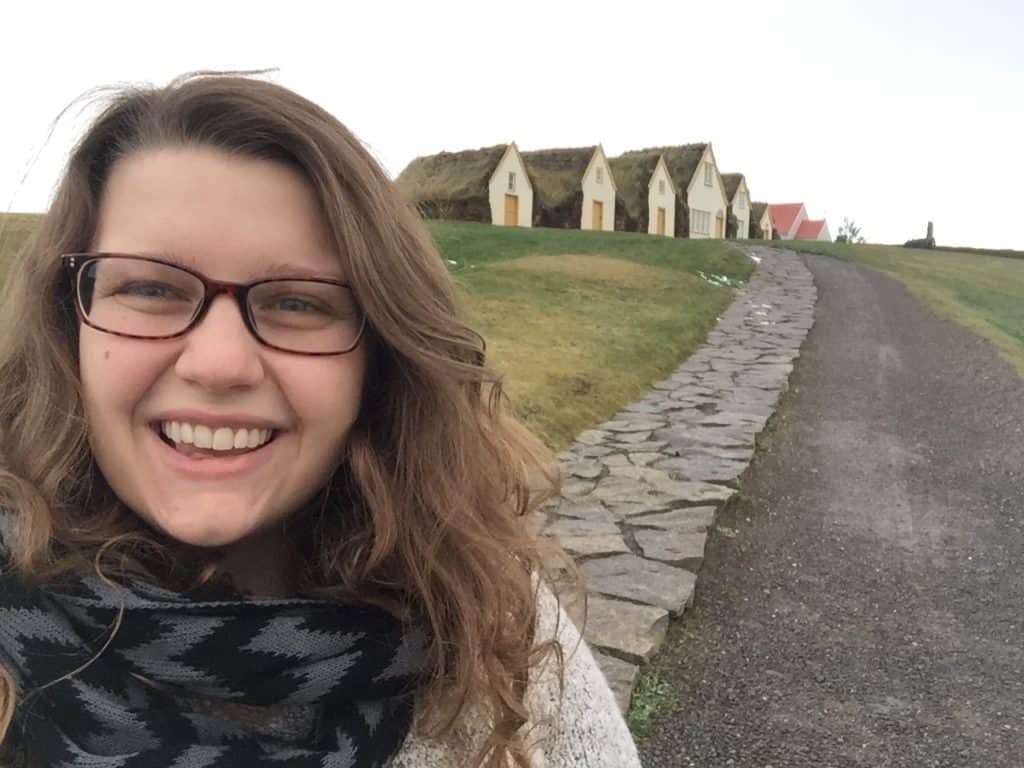
“Fuelled by my inquisitive whims, I always believed travel was more than the top 10 tourist attractions bloggers and guidebooks boasted about. My undying sense of curiosity persuaded me to look at travel differently and I soon found myself immersed in a different type of travel — one that is neglected and rarely talked about on the blogosphere. I experienced locals opening their homes to me and teaching me about their cultural heritage through their own words. I saw the world around me through their eyes, so I began writing about it.
The locals soon became a pinnacle source of information for me. They knew the best locales to enjoy nature, where to indulge in local foods, and the best roads to lose track of time. On my trips, I often miss the glorified attractions, but I felt part of a culture, which is so often overlooked.
The more I learned, the more apparent feminism became in my travels. I wrote about inequalities I witnessed and experienced around the world. I tried to advocate for change and challenge current mindsets with my words. It’s been a journey, but that’s what Quirky Globetrotter strives to uncover.”
– Martha from Quirky Globetrotter

“The Ninja Gypsy is a travel safety blog that incorporates travel safety, martial arts, and my personal stories from abroad. The posts I write are not the standard cookie cutter travel safety posts. Instead of the “10 tips to stay safe” that you see frequently on travel blogs, I go in depth into the topic of safety and what one should do. Beyond that, the blog also has a community for women on Facebook called Safe Travel for Women with over 1100 members. Here women communicate with one another and trade ideas on how to stay safe anywhere in the world.”
– Chelsey from The Ninja Gypsy
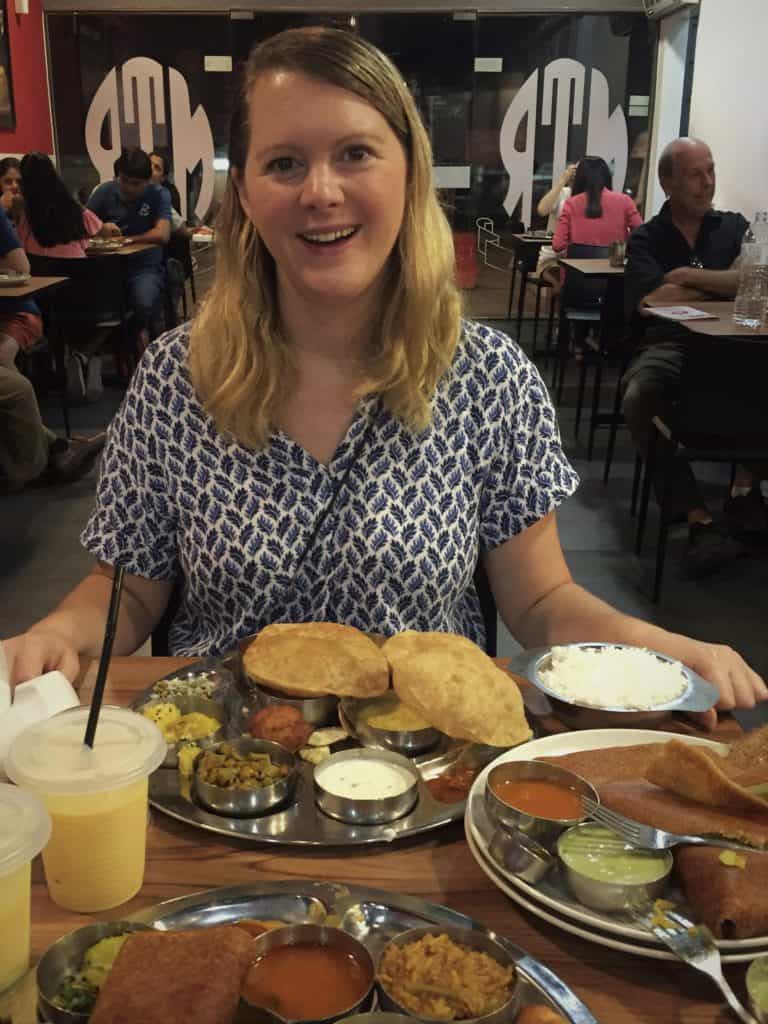
“Throughout my World For a Girl blog, I write about destinations that I’ve been to with my young kids (about 25+ countries and counting) and highlight important or inspirational women from those places. I also write detailed posts about global women’s spaces such as The Vietnamese Women’s Museum in Hanoi and the incredibly powerful War and Women’s Human Rights Museum in Seoul. My overall goal is to encourage parents to travel with their daughters – I’m currently working on a mini e-book in this area.”
– Kirsty from World For A Girl
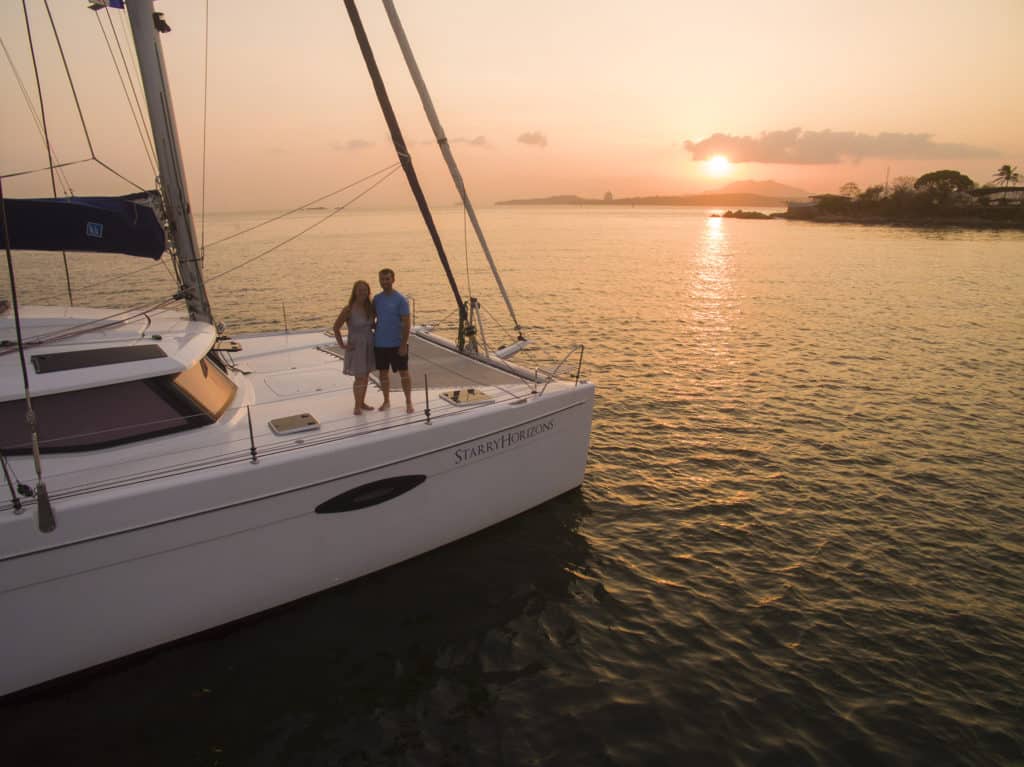
“Our goal is to circumnavigate the world on our sailboat. We started our adventure by boat shopping and outfitting. Now, we’ve made it over 30,000 nautical miles and to 29 countries/territories over four years. We still have a year and a half to go; crossing the Indian Ocean to South Africa and then up to the Caribbean.
Some of the best things about our travel style are that we get to visit remote locations that aren’t easily accessible otherwise. We experience slow travel, moving our entire home with us everywhere we go. The downsides are that we are self-contained; it’s very possible we will have to rely on ourselves for survival if something were to go wrong.”
– David and Amy from Out Chasing Stars
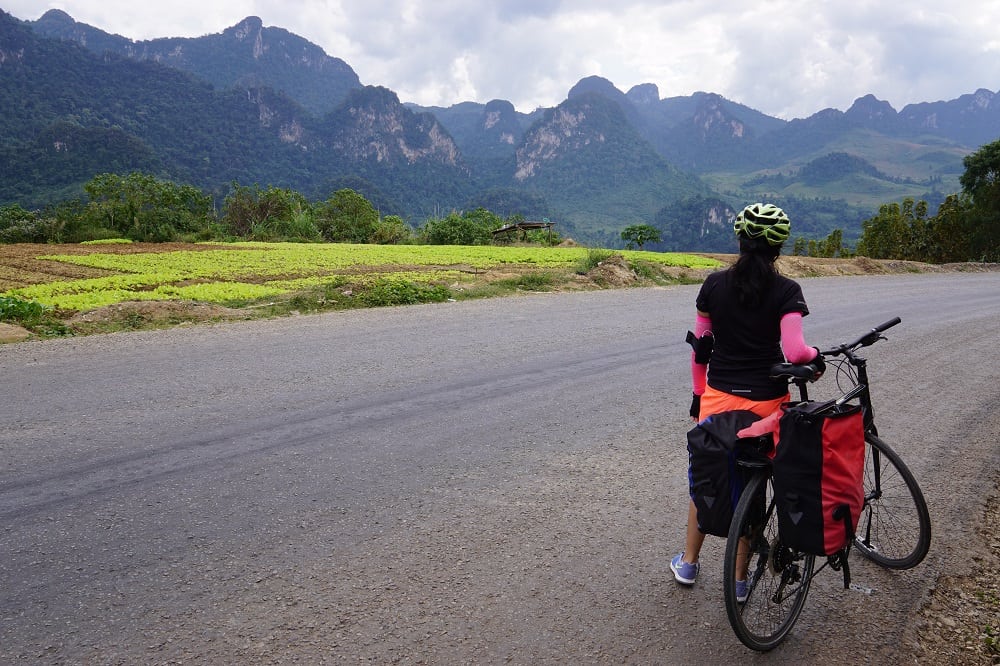
“A decade ago bicycle touring was almost unheard of, and now that has completely changed. Inspired by how cycle travels and hiking can change the way you learn about people, landscapes and your own limits, The Gone Goat attempts use bicycle touring and hiking to explore new places and remote regions of the world.
Stories like cycling from Vienna to Budapest and the highest motorable road in the world allowed me to meet interesting people who put their bicycles and forked out meagre savings to put together a decent bike and use it as a vehicle to travel the world cheaply. As more people discover the love of bicycling and hiking in their own country, it is a natural progression to want to explore other places on a two-wheeler or on foot.”
– Pashmina from The Gone Goat
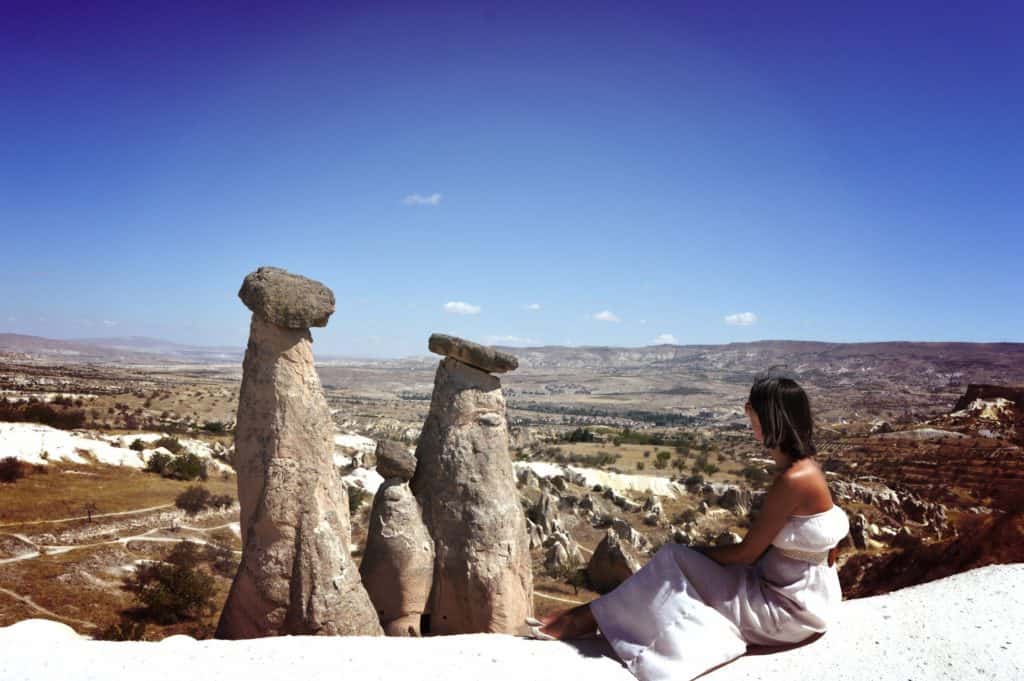
“Kosovo Girl Travel is a blog that I, Lavdi, use to share my travel experiences which are mostly conditioned by my passport or the bilateral relations or lack thereof between Kosovo and the country I travel to. I started Kosovo Girl Travels in March 2017, initially to share more information about Kosovo online, as not much can be found nowadays. Travellers seem to avoid Kosovo, either because they don’t know its worth or because sometimes they are misled.
Many times, Western bloggers promote the idea that traveling is easy and all you have to do is to pack and go; however, this is, in fact, a privilege they enjoy and not the absolute. For a Kosovo citizen like me, it takes time and lots of research and money expenditures prior to being able to hop on that flight and see the world.”
– Lavdi from Kosovo Girl Travels
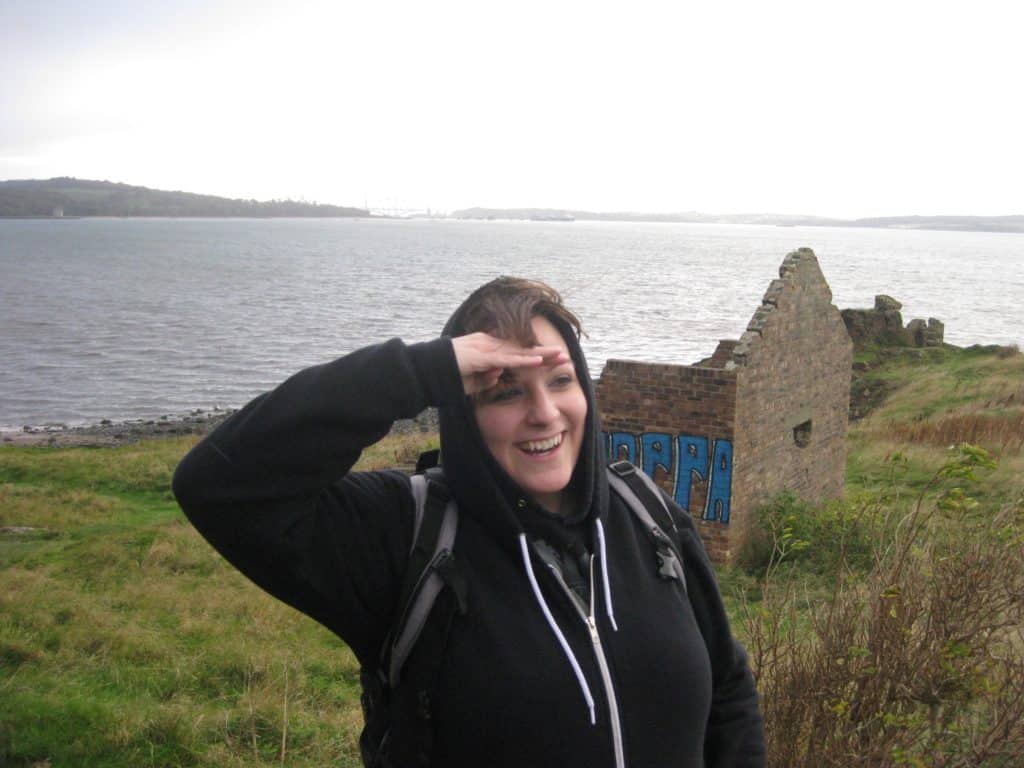
“Wandering Crystal is a double niche blog. One half is light-hearted and inspirational, concentrating on moving abroad — specifically to the United Kingdom. Although the content focuses on the UK, my experiences can help anyone moving anywhere in the world. I love discussing my time living abroad and encourage people to move abroad themselves because living in another part of the world is such a great experience.
The second half is more lurid and focuses on dark tourism. I love history — especially humanity’s morbid, grim and grisly side. Anytime I discover some dark history, I’m lured in and can’t absorb the details quickly enough. I’m always craving more and feel completely consumed by the terrible events that occurred throughout human history. There’s an entire community of people out there who share my love of the macabre and I want to fulfil their dark desires with my dark tourism posts.”
– Crystal from Wandering Crystal
Related: Why I want to move abroad

“My two favourite things in life are Scuba diving and writing! When I started my blog last year, I knew that I had to focus on diving, as that is my day time job. So many people nowadays learn to dive or even become professionals, so I figured a blog would be a great way to share some of my knowledge. I love it when people email me to tell me they enjoyed my blog, or ask me for recommendations for going professional.
There is a wealth of information for divers out there from the different worldwide organisations, but I think people like to read it from a more human perspective too. I love to write about specific diving destinations so people know what to expect when they arrive. I also enjoy writing “what to expect” type articles for different diving courses, so people can get themselves ready and organised!”
– Demi from Around The World With Her
Related: I went Scuba diving in Malta!

“I run the family travel blog Healthy Travel Mom.
Healthy Travel Mom is dedicated to sharing the best destinations and experiences for active, healthy families. This blog is unique because every story I write includes healthy tips to help people find great ways to enjoy even the most decadent of destinations. It is not your typical family travel blog!”
– Gwen from Healthy Travel Mom

“Earth’s Attractions is a 5 year old travel blog that focuses on comprehensive travel guides written by locals or people who’ve stayed in a city for a long period of time. The aim is to help those who want to visit a given city or country to get the best information so that they have a memorable trip. This information includes safety tips, things to do, what to expect, unusual attractions, and more. So, by having guides written by locals, our visitors get inside tips and tricks and useful recommendations.
The guides include famous attractions as well as off the beaten path things to do in that specific city/area, where to eat and stay, and useful travel tips for each city. The blog belongs to Loredana Pascal from Romania and often receives useful contributions of her mother. Earth’s Attractions also has numerous itineraries, stories, insiders’ travel tips, accommodation recommendations, and more.”
– Loredana from Earth’s Attractions
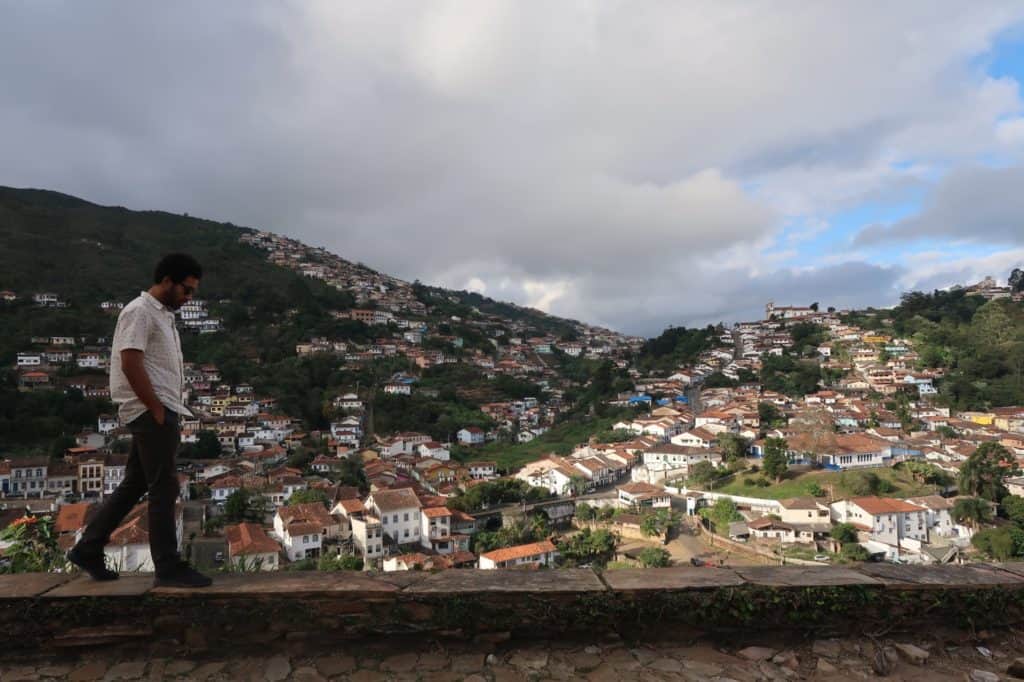
“One thing I have learned over the years is that ordinary travel is not my thing. Cultural travel is all about becoming part of the everyday life of the place in which I’m in. The reason I set up Layer Culture was I wanted to learn how to live outside my comfort zone and connect myself with a new culture.
Everything about my trip has to be carefully chosen. My destination for 2018 was Colombia and I have stayed with local families. I speak their language and learn the local customs. Unlike a backpacker who is closed to experiences of everyday life in a foreign place, I have found with cultural travel the challenges are different.”
– Daniel from Layer Culture
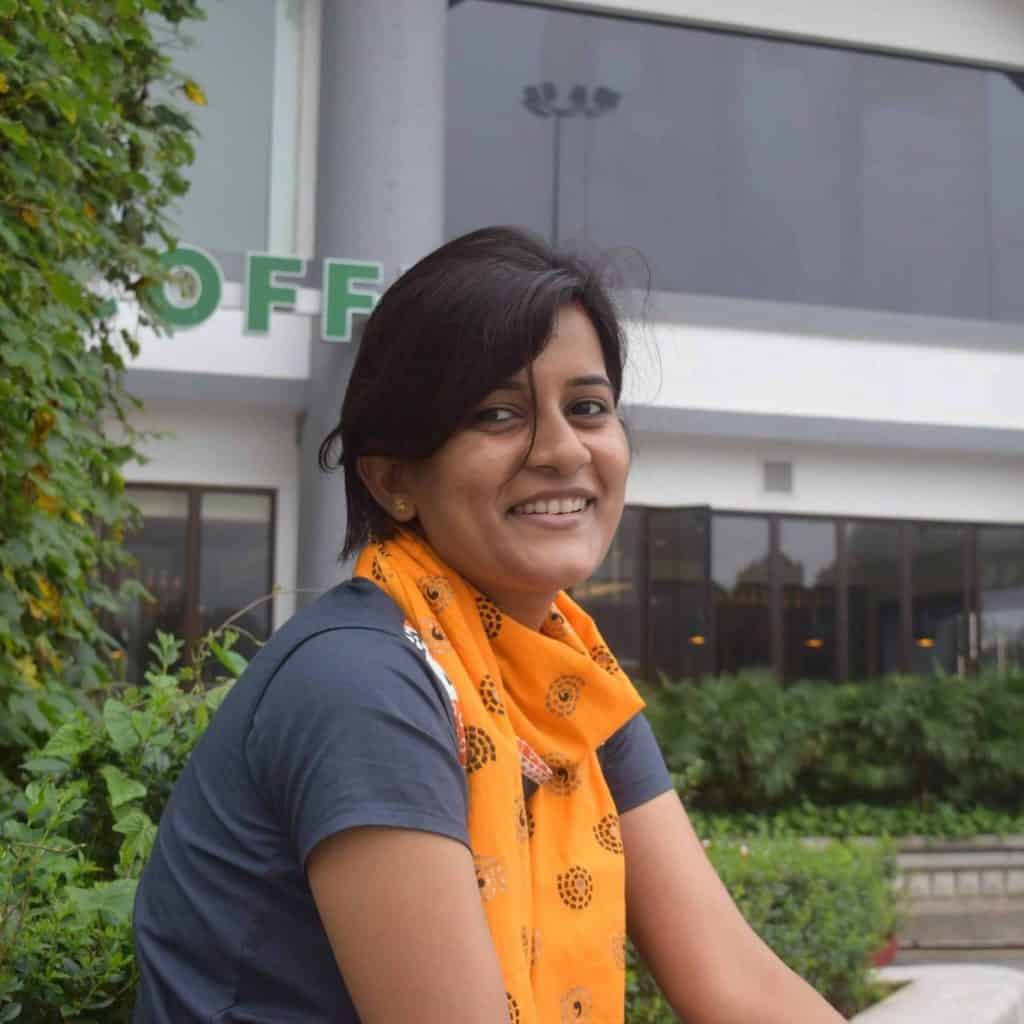
“I am an India based family travel blogger. I started my blog with the intention to inspire people to save money and travel the world with family and friends. On my blog, I share family holiday itineraries and offbeat things to do with family & friends in a holiday destination. I believe holidays don’t need to be expensive by staying at a luxury resort or hotel and spending a lot of money.
My travel blog Budget Family Trips encourages people to save enough money to travel the world as per their budget. If your pocket doesn’t allow you an international holiday, no matter. You can just go to a nearby city in your home country – that’s absolutely fine. Budget Family Trips gives family holiday ideas as going on holidays is the ultimate way to spend quality time with your parents, family, kids & friends. We are not born to just pay bills and die, so explore the best family holiday ideas at Budget Family Trips.”
– Riya from Budget Family Trips
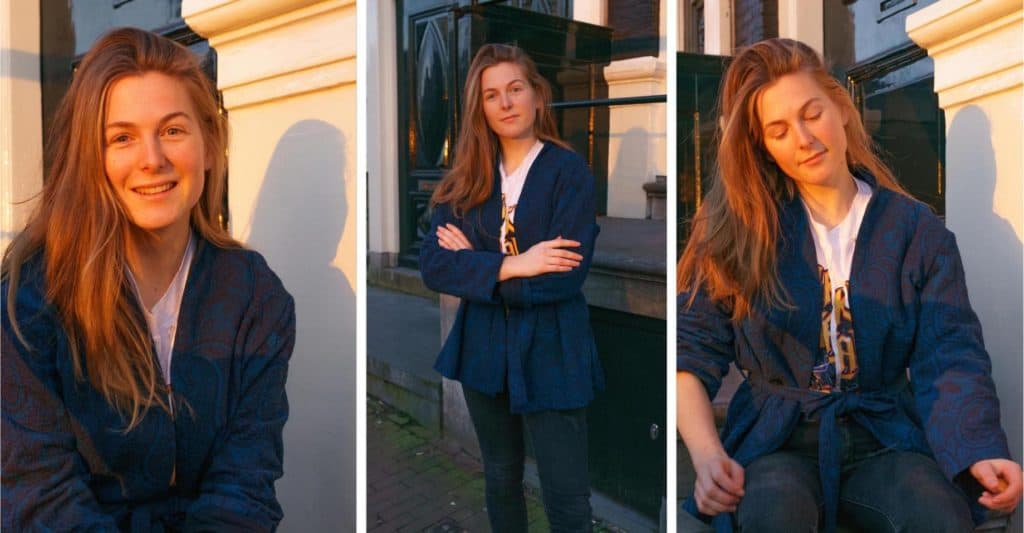
“As a Dutch, born and raised, local I noticed that many foreign tourists do not explore The Netherlands beyond Amsterdam. Instead, they tend to just follow the crowds. And this is something that I decided needed to change. I’m not planning on changing names so that tourists are visiting a different place, such as making the Muiderslot into Amsterdam Castle just to attract tourists while it’s a completely different city.
What I am doing is helping foreigners to explore The Netherlands beyond the crowds. I do this through the stories on my travel blog about The Netherlands, as told by a local. As a local, I’m aware of the beauty that my country holds. And I’m happy to help other people explore The Netherlands beyond the crowds.”
– Manon from Visiting The Dutch Countryside
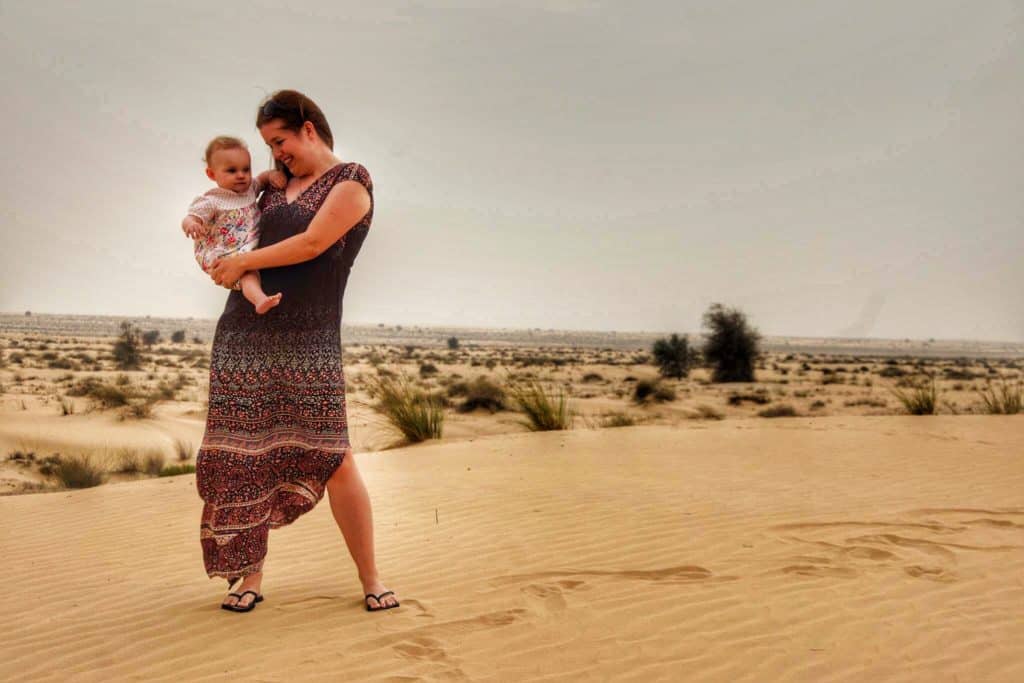
“The Wandermust family love traveling with their toddler to unusual places. In 2018 they completed a round the world trip with their daughter. 2019 is the year of their Middle East family travel as they explore the UAE (from the best luxury hotels in Dubai to some of the more cultural attractions in Abu Dhabi), the desert of Qatar to the mountains of Oman and more! If you want to know what luxury and adventure travel with a family in the Middle East is all about, then this is the blog you should be following in 2019!”
– Leona from Wandermust Family

“Hi! I’m Karen from Cruise Ship Karen. My site is part blog, part resource site about travel by cruise ship aimed at crew and cruisers. I’ve worked in cruise entertainment since 2005 and started my site because there is precious little independent, cruise-tailored info for crew and guests on what to do in port available onboard or online. I show cruising can be an enriching way to travel by sharing my first-hand knowledge and tips learned from adventures and tours in 101 countries so far.
Get insider info from my detailed Port Guides (the resource part), blog on interesting experiences and food, vlog port guides (just voted in Top 40 Cruise Channels), articles on what life is really like working on a ship, and my Published Pieces section showcasing some of my freelance work. My goal is to become the trusted place for port and #Shiplife info. Happy cruising!”
– Karen from Cruise Ship Karen
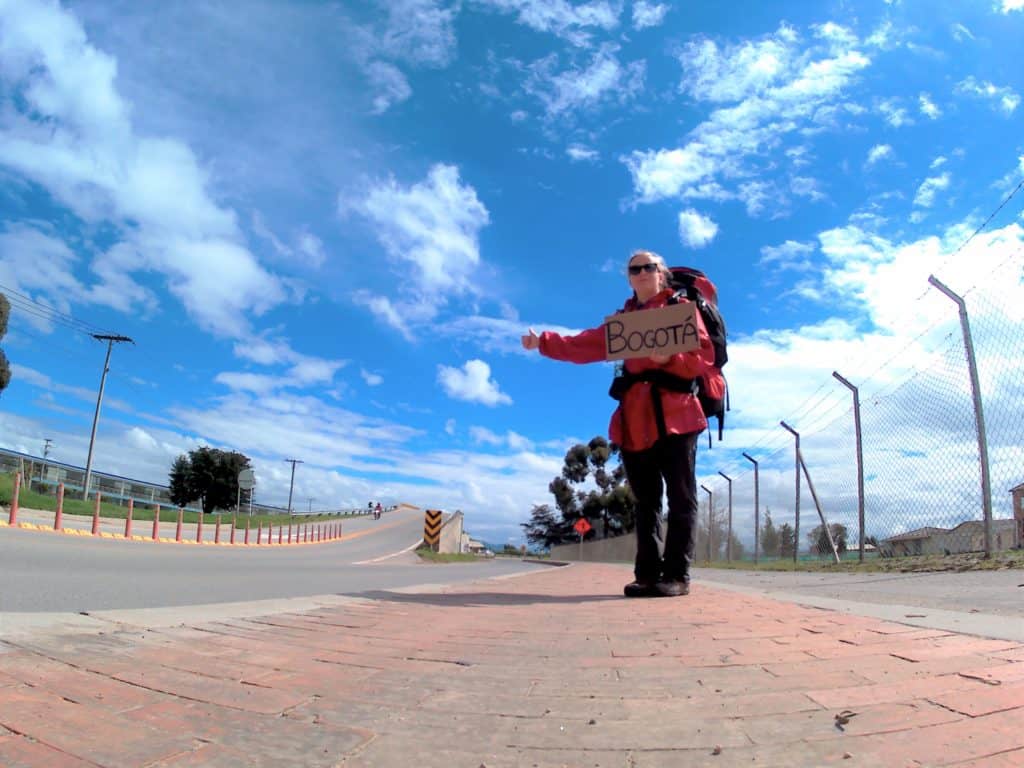
“Perhaps the thought of hitchhiking scares you, or you think hitchhikers don’t exist anymore… But there are a few corners of the web where hitchhikers blog about their adventures and share information. One of those corners is my blog, where I’ve been writing down my stories in English since 2014. Along with more generic travel articles, I write about hitchhiking all moving things, mostly as a woman alone. I’ve put up my thumb and gotten into the car with thousands of strangers in more than 50 countries. It’s what makes me happiest.
Yes, there’s the occasional troll and concerned parent, but no matter your niche, your blog will have people opposed to what you do. Mostly, I’ve received positive reactions from other hitchhikers, solo travelers, female travelers, and other curious souls. Engaging with my audience has been a mutually inspiring and encouraging endeavour.”
– Iris from Mind of a Hitchhiker
Related: Why solo travel can change your life
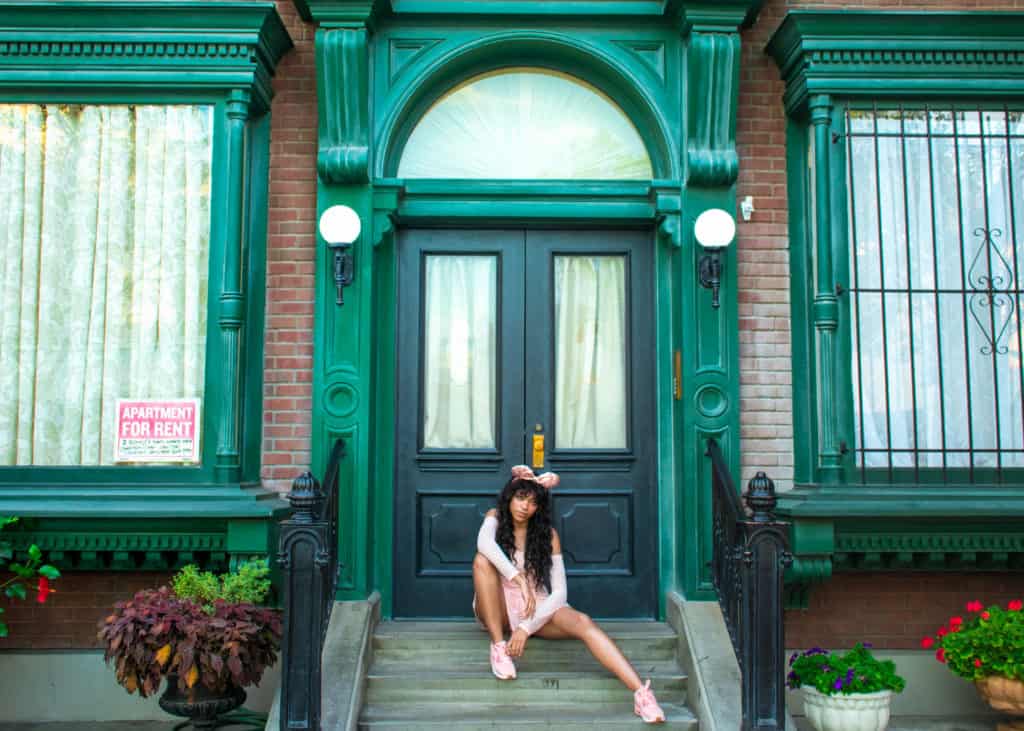
Along with accessible travel, I focus on dispelling myths and misconceptions about the different countries I visit. I do this by interviewing locals so that my readers have the opportunity to learn about a place from a local’s perspective. I also founded a non-profit organisation, The Global Dreamers Foundation, to sponsor passport application costs for first time travellers.”
– Kay from The Awkward Traveller
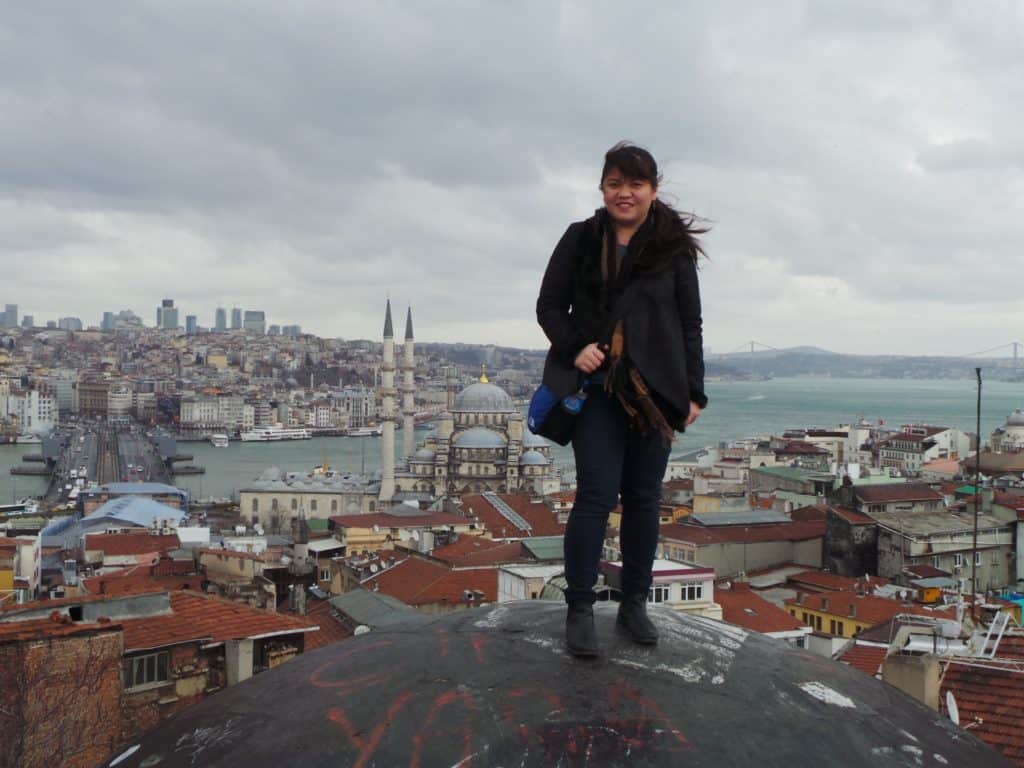
“Everything Zany is a dual citizen travel blog where East meets West with the aim to show the best of both worlds. The blog covers various travel styles and interest like cruises, luxury and sustainable travel, city and romantic breaks, photography tours, nature, cultural and gastronomy trip, backpacking, flashpacking and adventure travels.
Moreover, Everything Zany has also been featured in various big publications and media like Lonely Planet, Huffington Post, CNBC. It was also one of the finalists of the UK Blog Awards 2018 Travel and Photography categories.”
– Ryazan from Everything Zany
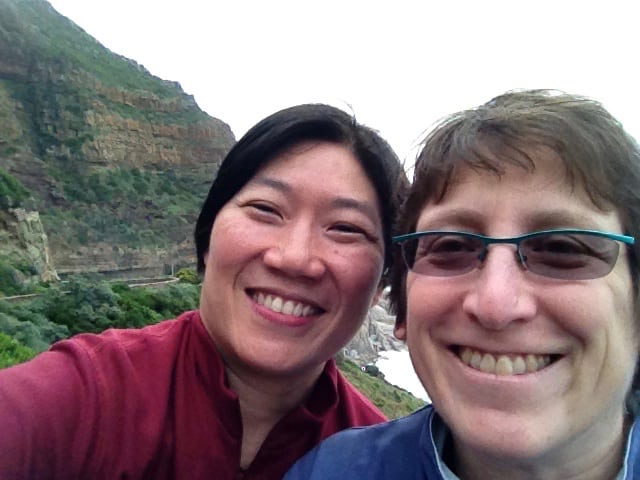
“What to look at travel from a unique perspective? Take a look at the Travel for Life Now blog. Sue Davies and Regina Ang hail from the United States and Singapore. They have visited more than 60 countries on 6 continents, including Antarctica. Through their travels and writing, they bring together eastern and western perspectives.
On their blog, you will see reflections on near and far away places with a humanistic worldview, scattered with little-known tidbits, out-of-the-way places, and historical background. Whether you want to read about penguins in Antarctica, the Buddhist and Hindu Temples in Indonesia, Lesbian and Gay travel in Cuba or Street Art around the world, Travel for Life Now will give you a new way of seeing our planet.”
– Sue from Travel For Life Now

“Although I was born and raised in Canada, I am of Caribbean decent. Because of this, I have a desire to spread the impact the Caribbean has on the world we know it today. I spend my time traveling to re-discover the Caribbean and how unique each island is. From travel guides, to Caribbean fashion, to travel stories, legends and folklore of the Caribbean: you will find it all on Never See Come Sea. Growing up in Canada, I have a great appreciation for my heritage and want to share the Caribbean’s legacy with the world.”
– Reanna from Never See Come Sea
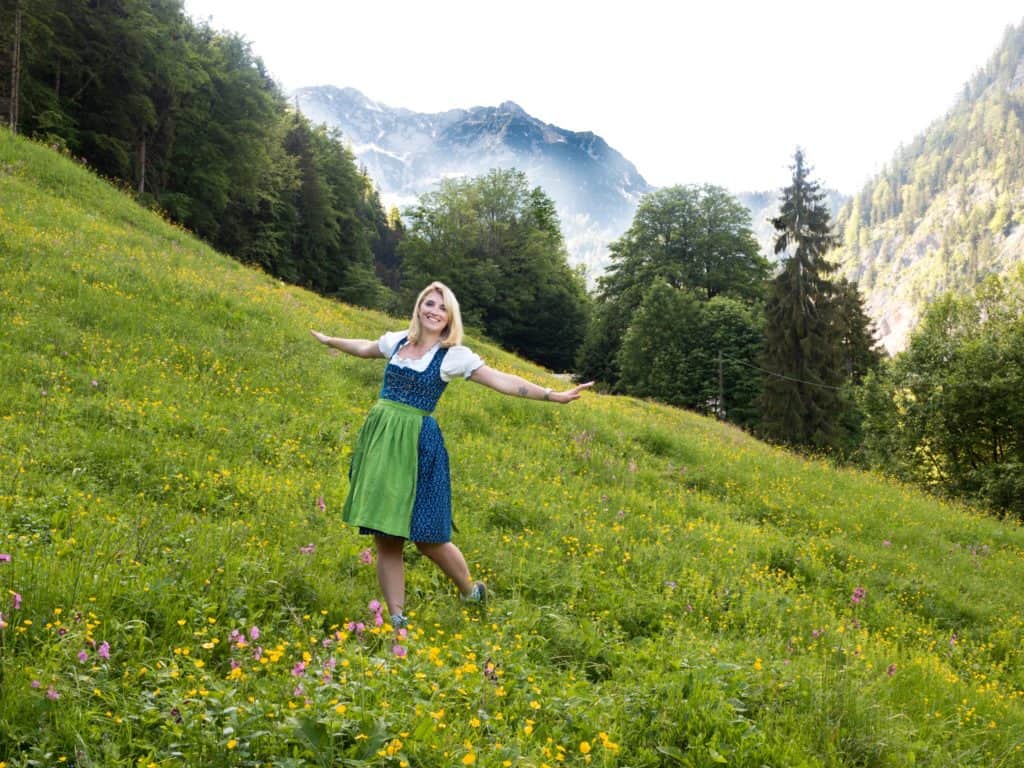
“Viktoria started travelling in her Dirndl – the traditional Austrian dress – long before she started her travel and dive blog called Chronic Wanderlust. Over time the dress and her traditional hat became her signature look. It’s always the dark blue dress with the bright green apron that you’ll spot on her many photos abroad. Be it the Taj Mahal, Bali’s rice terraces, hidden spots in Mexico or back in good old Austria – in Hallstatt, Salzburg or the gorgeous countryside of Styria – her dress has seen it all.
She shared that one of the most challenging places to wear it was a recent trip to Ethiopia. There, she went to the world’s hottest place: Danakil Depression. ‘More than 40°C and no shades anywhere. But the photos and the experience were worth the sweat!'”
– Viktoria from Chronic Wanderlust
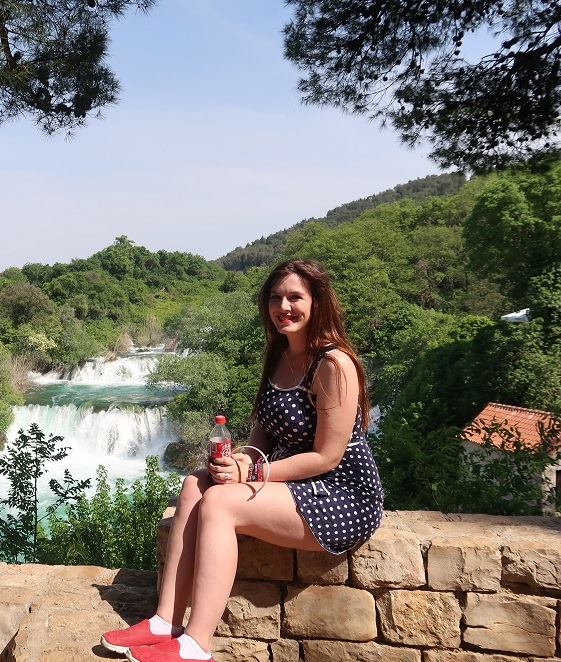
“My travel blog is dedicated to the type 1 diabetics of the world. We aim to inspire and motivate them to take on their dreams, regardless of whether that means travelling the world or undertaking a different personal challenge. Being type 1 diabetic myself, I know the challenges and difficulties it can bring to travelling.
I wanted to create a space where people with type 1 diabetes, and other chronic illnesses, could go and find advice and inspiration from someone who does this full time. Before I started my blog, I couldn’t find anyone else travelling the world with diabetes and talking about it. That’s why my partner and I thought it was time that changed and Dream Big, Travel Far was born!”
– Cazzy (and Bradley) from Dream Big, Travel Far

“My name is Nicola and I run the successful travel blog All about RosaLilla. Looking back to two years ago and I couldn’t even imagine the trek to the bathroom, let alone travelling the world.
You see, way back in 2001, as a student exploring Montauk, New York, I got bitten by a tick. I didn’t realise then the significance of that bite and how it would change my world. When I came home I became very ill and ended up in heart failure 9 months later. At that stage nobody could put two and two together with the bite and I was left bewildered by what had happened to me.
I gradually recovered from my heart failure but never felt the same. My energy levels were certainly affected and I was having very strange symptoms. Still I struggled on in my career as a medical scientist in a busy hospital laboratory completely unaware that I had Lyme disease.
Flash forward to 8 years ago and my jaw had become so badly deteriorated by the bacteria that I needed surgery to break and realign it. I woke up from that surgery a completely different person. However I could function before, now even simple tasks like going to the bathroom or brushing my teeth became a struggle. I became paralyzed and suffered intense pain daily. I could no longer do my dream job and the one I had studied so hard for.
My only real connection to the world at this time became social media and Instagram in particular. I always loved travel and, to keep myself sane during that extremely difficult time, I would browse the Instagram pages of travel bloggers making a mental bucket list for when I got better, not knowing if I ever would.
Refusing to be defeated by my Lyme disease, I researched and researched new treatments. I eventually found a treatment in Germany that had a good success rate. And in 2016, I travelled to Frankfurt to have stem cells. It was also the time that I decided to start my own blog.
Five months later my blog had grown and I was selected to be a participant of the Kerala Blog Express exploring India. The girl that had been completely bed-bound was now exploring India! I also managed to travel to many of those places that I had on my bucket list all those years ago. My blog grew out of a chronic illness and my message is simple. Never give up! I will continue to travel the world through the eyes of a child seeing things for the first time. I appreciate every single place I get to visit and I love sharing it with my readers. Many of them have chronic illness themselves and are simply looking for hope. It means the world to me that I have come full circle and that I am now considered an inspiration for travel related content.”
– Nicola from All About RosaLilla
There. These were some of my favourite unique travel bloggers of 2018, and I’m looking forward to the content these people come up with in 2019. (And you should be, too)
Do you know of any unique travel bloggers you would recommend? Let me know in a comment!
Thanks for reading!
-S
Design by NXNW.